fall inside a hole
Tohoku Joetsu Shinkansen with Light (1981)
First written August 15, 2023Expanded & reviseds June, August, December 2024
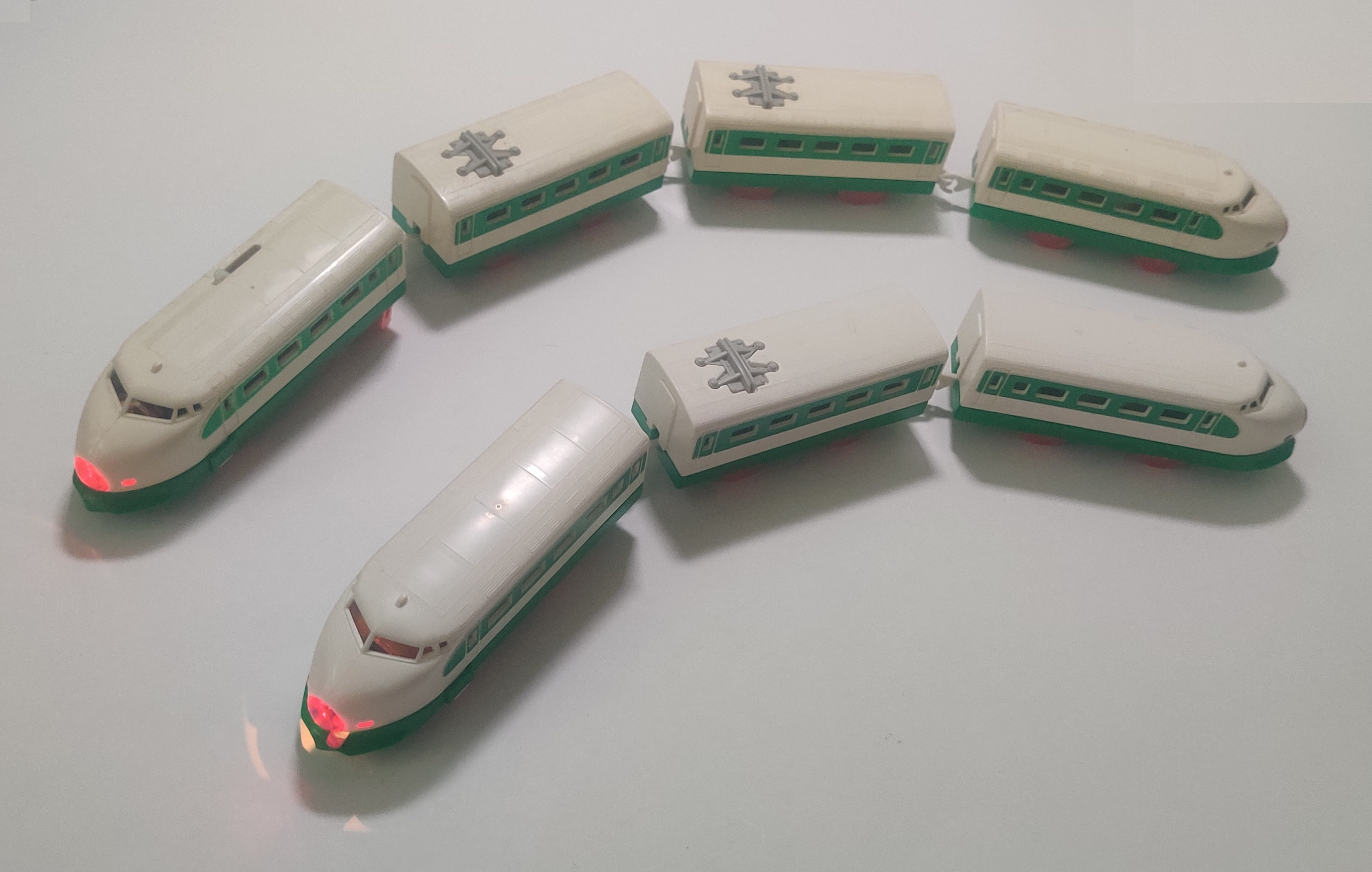
Green-trimmed 200-series Shinkansens based on the original 0-series design began servicing the Tohoku Joetsu Shinkansen line in 1982. The 200 series was the second Shinkansen class to be developed, predating the mid 80s 100 series trains with their shark noses, although some late 200 series trains were manufactured in the 100 series styling. 200 series have snowplows fitted to help deal with snow on the lines. Tomy released the ライト付 東北上越新幹線 Tohoku Joetsu Shinkansen with Light in April 1981 based heavily on the existing Hikari with Light 0-series molds. Although the body shells and intermediate car's chassis are identical to the 0-series, the power and tail car's chassis have added molded snowplows to mimic the real ones fitted to 200 series trains to clear the snow on the mountainous route.
EC12 Tohoku Joetsu Shinkansen with Light (1981)
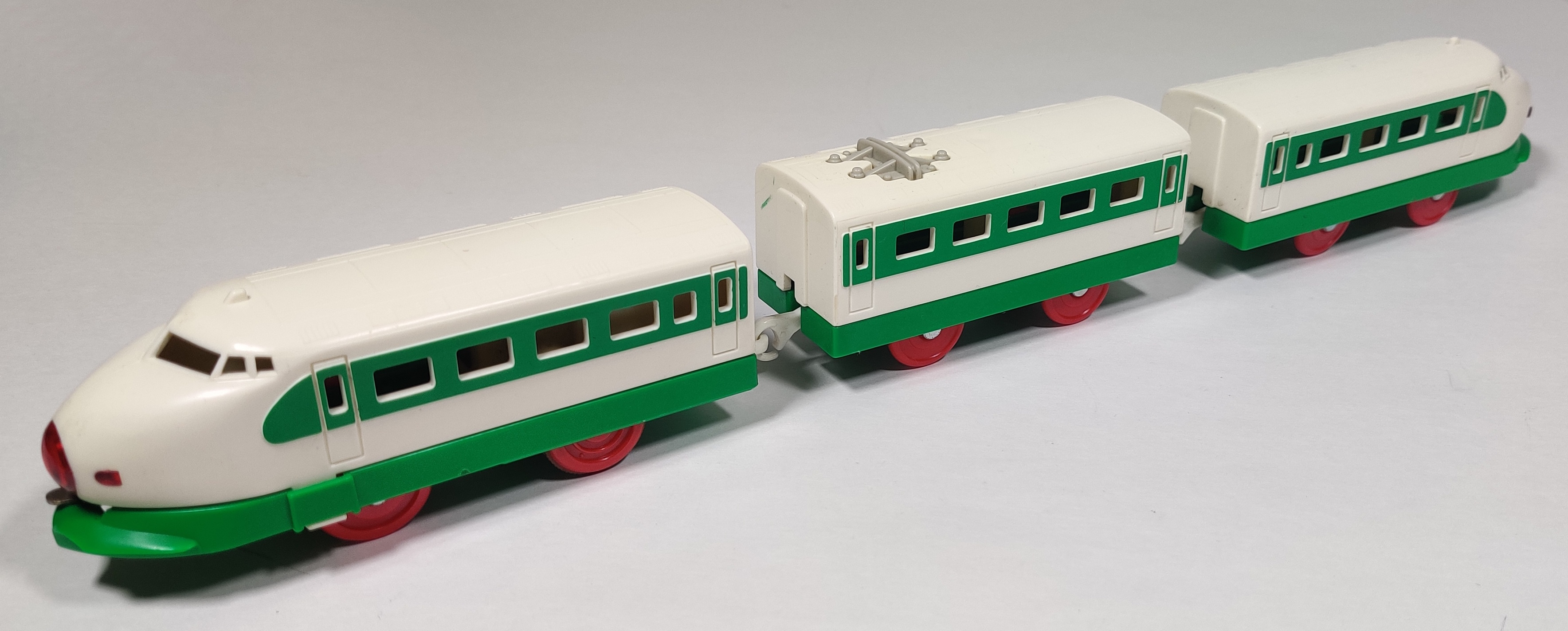
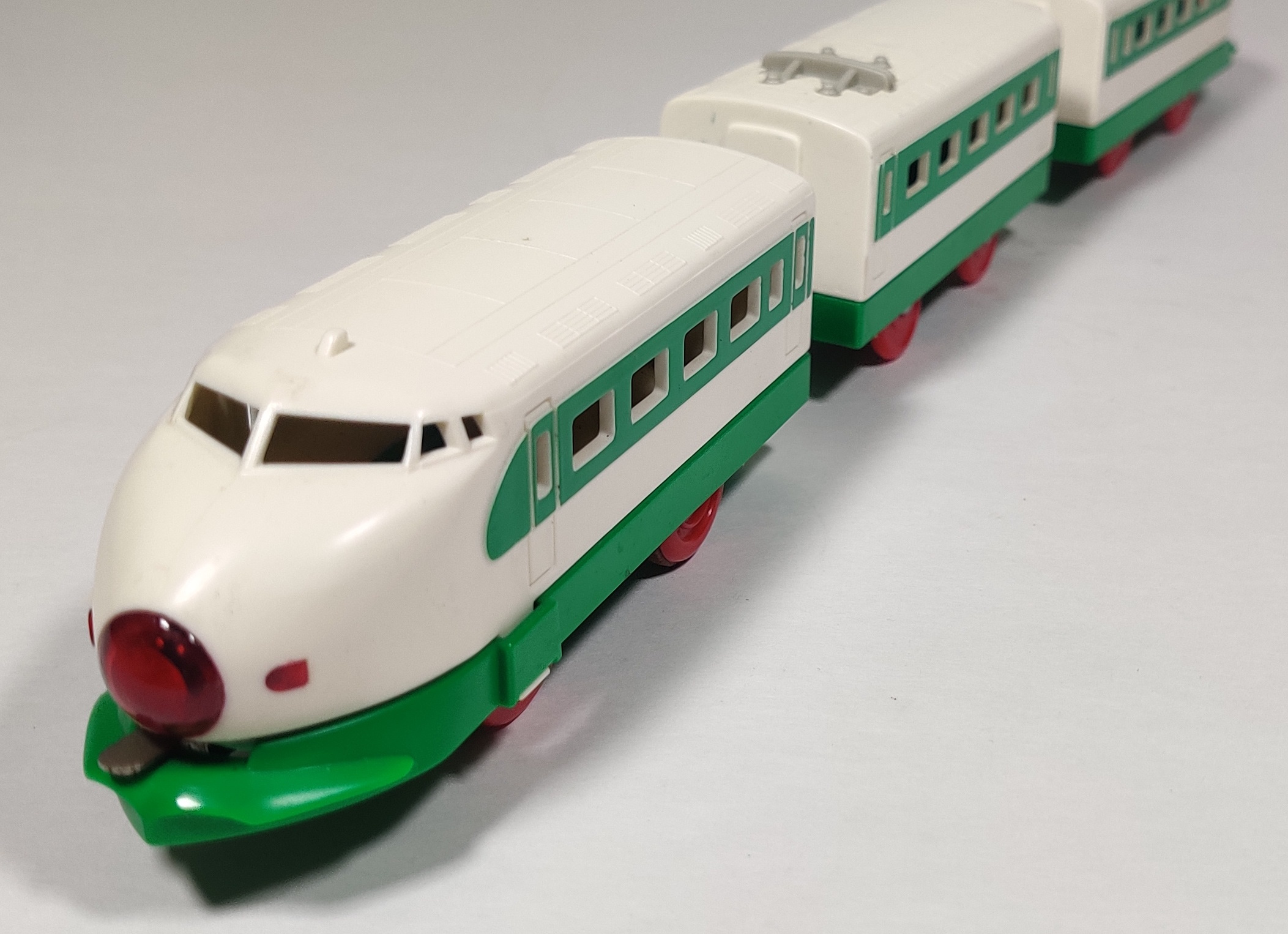
The Tohoku Joetsu Shinkansen with Light was first released with the EC12 designation in a fifth generation box around 1981.
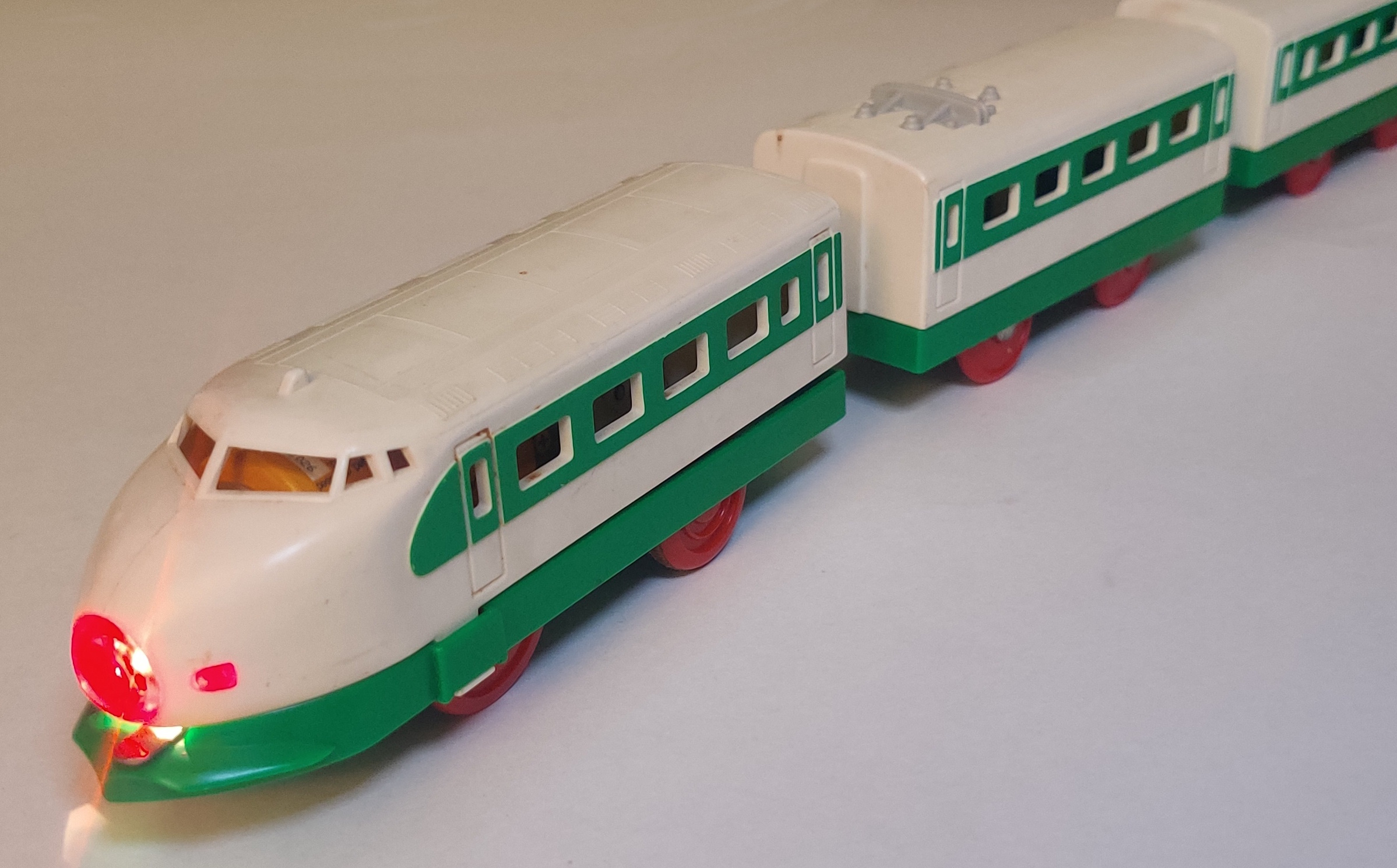
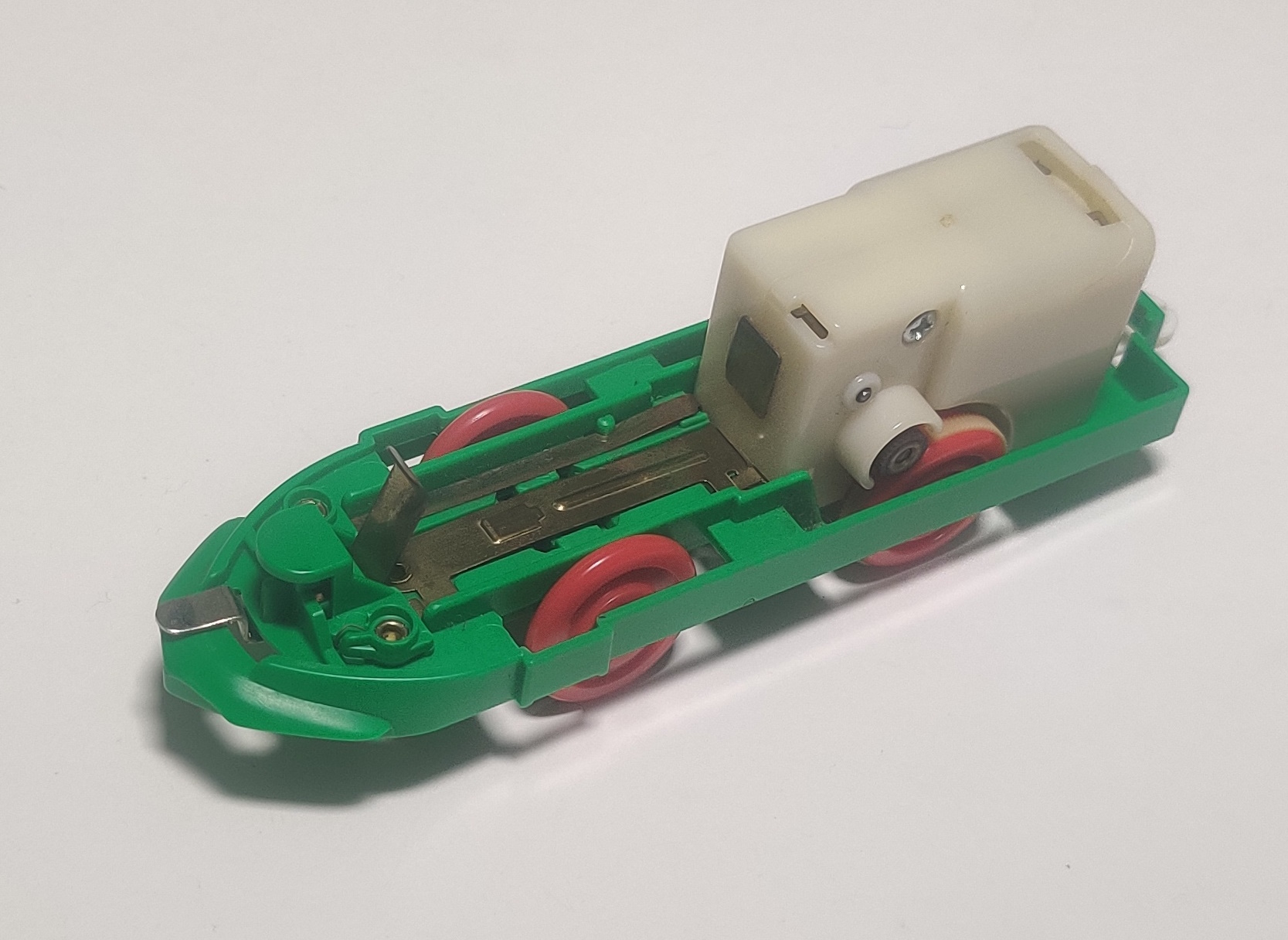
The Tohoku Joetsu Shinkansen with Light was based on the 1979 Hikari with Light but revised the more expensive and complicated spring-loaded pin system and relocated the bulb to the front of the power car chassis. An incandescent bulb fitted into the nose of the engine is wired into the negative terminal of the battery also in the nose off the engine while a second metal contact strip coming back up the length of the chassis provides the positive connection. The negative connection branches off from the contact strip downstream from the power switch so that the light turns on with the motor.
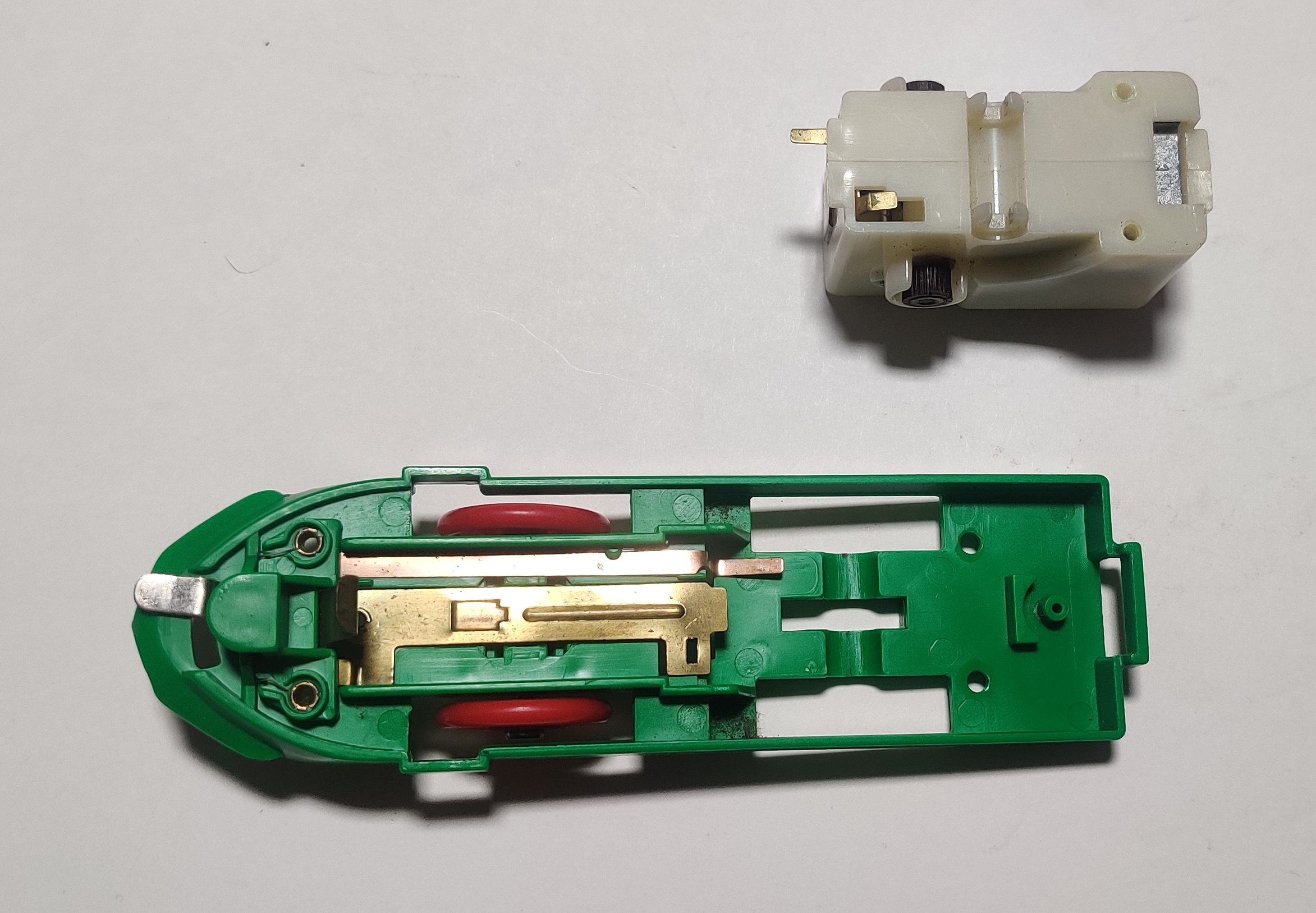
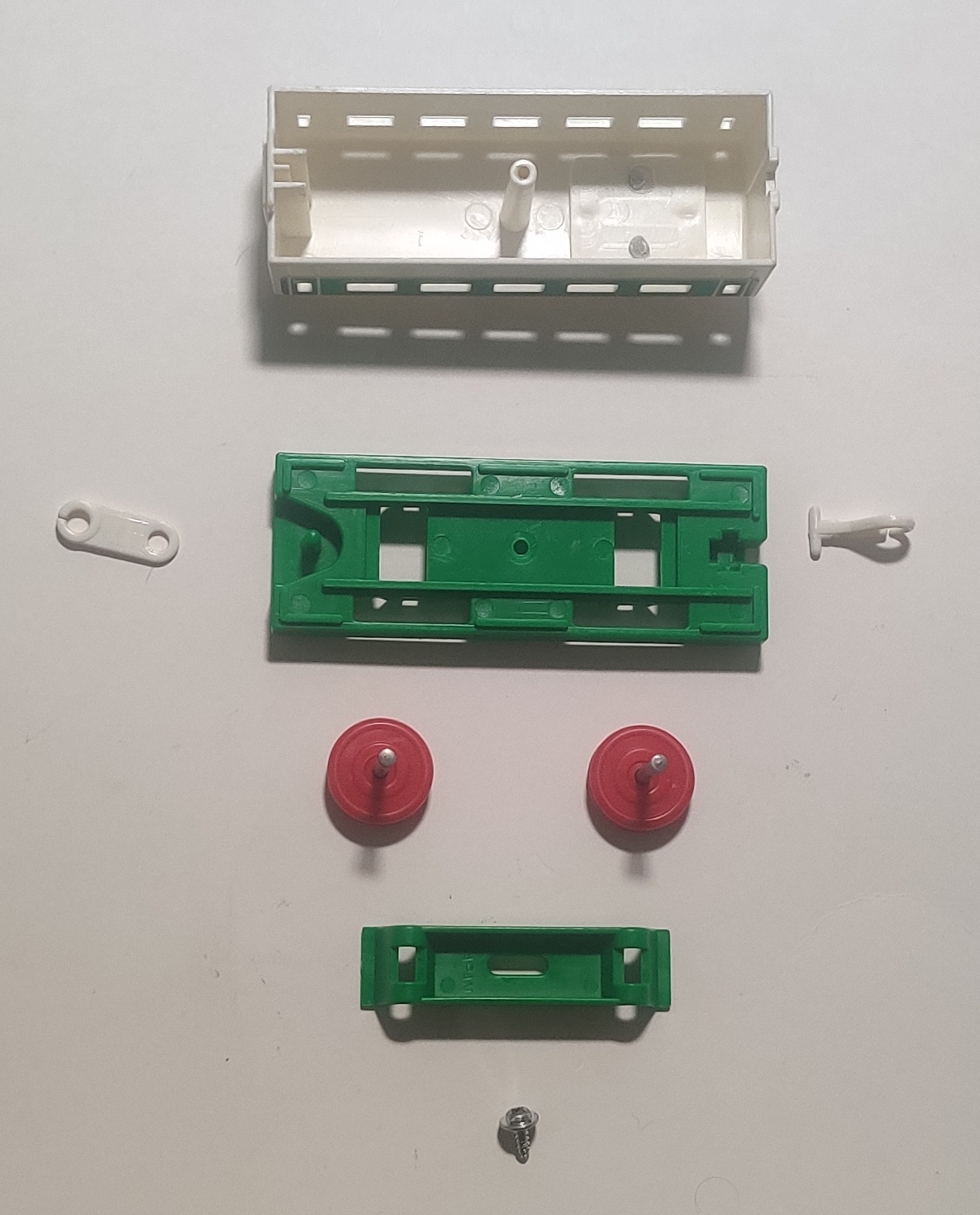
The train uses the rear-contact friction-drive gearbox that has an extension of the positive battery terminal that sticks out underneath and is held against the additional contact strip. The power car and cars are all of period construction and the rim-drive gearbox is the plastic type used at the time.
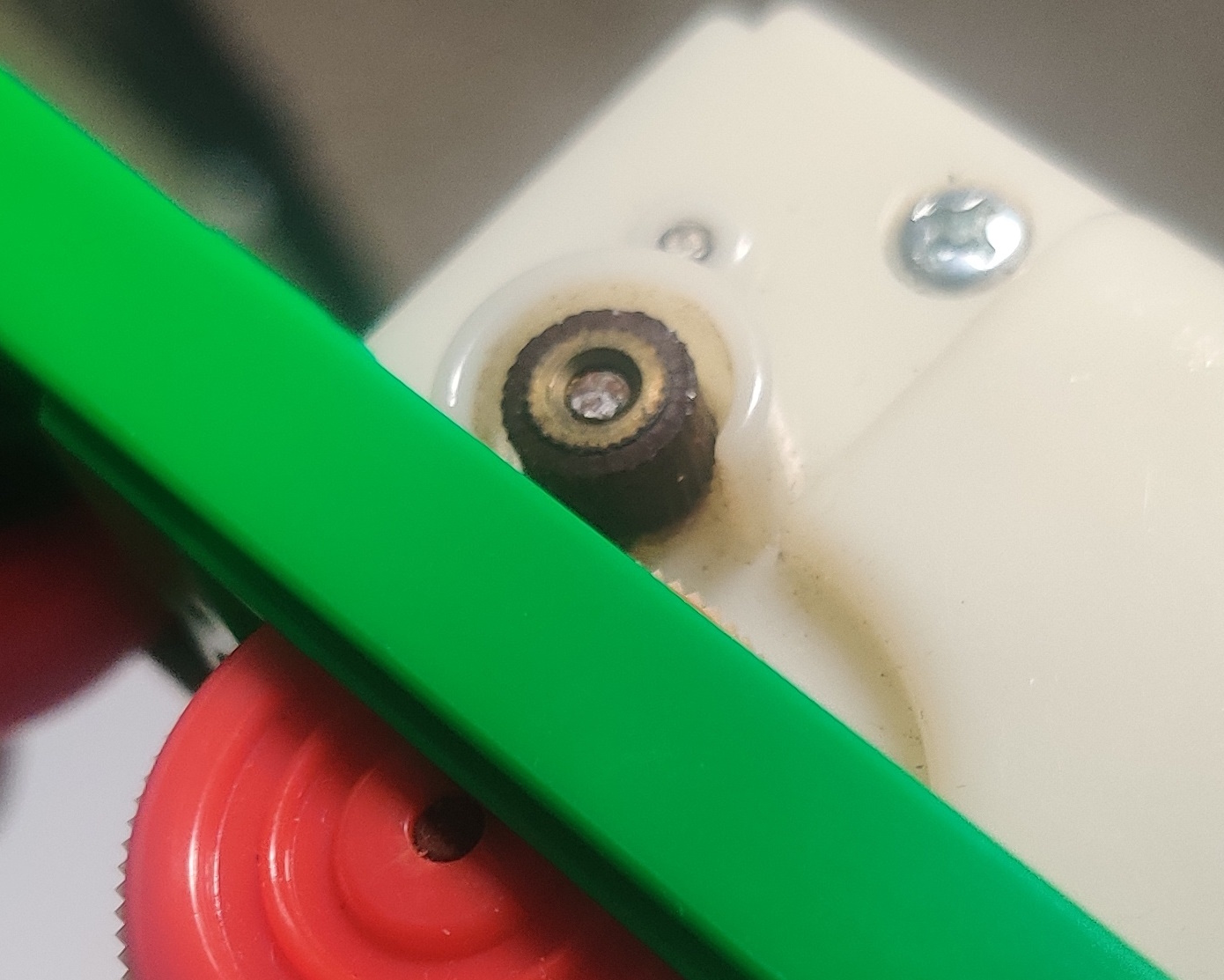
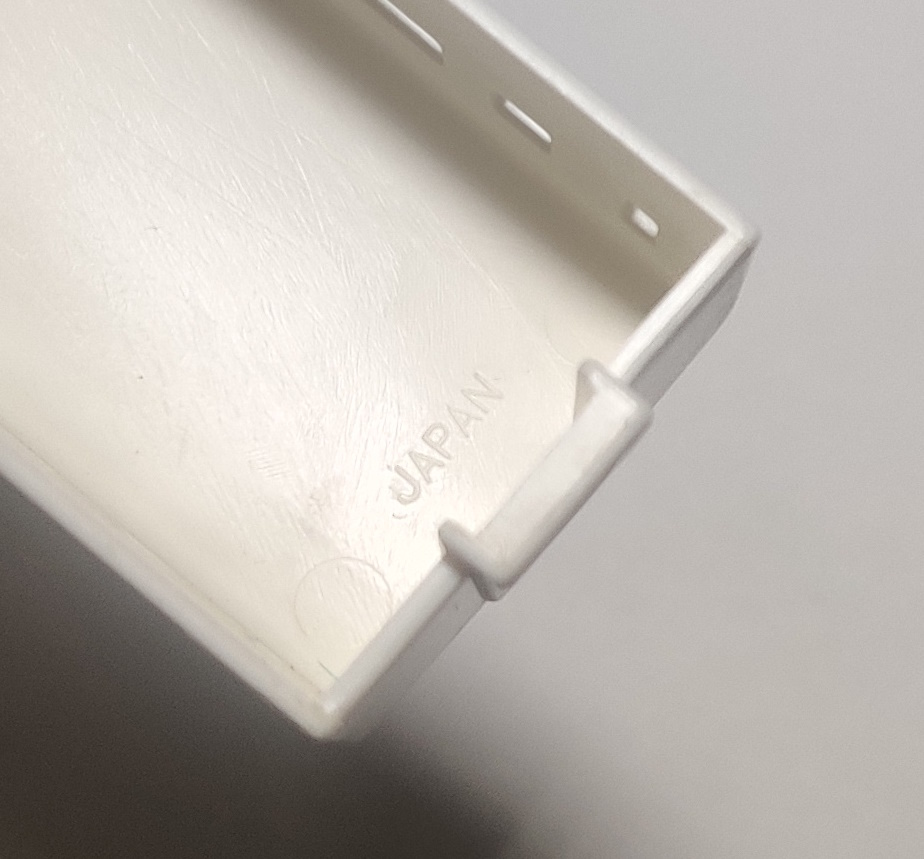
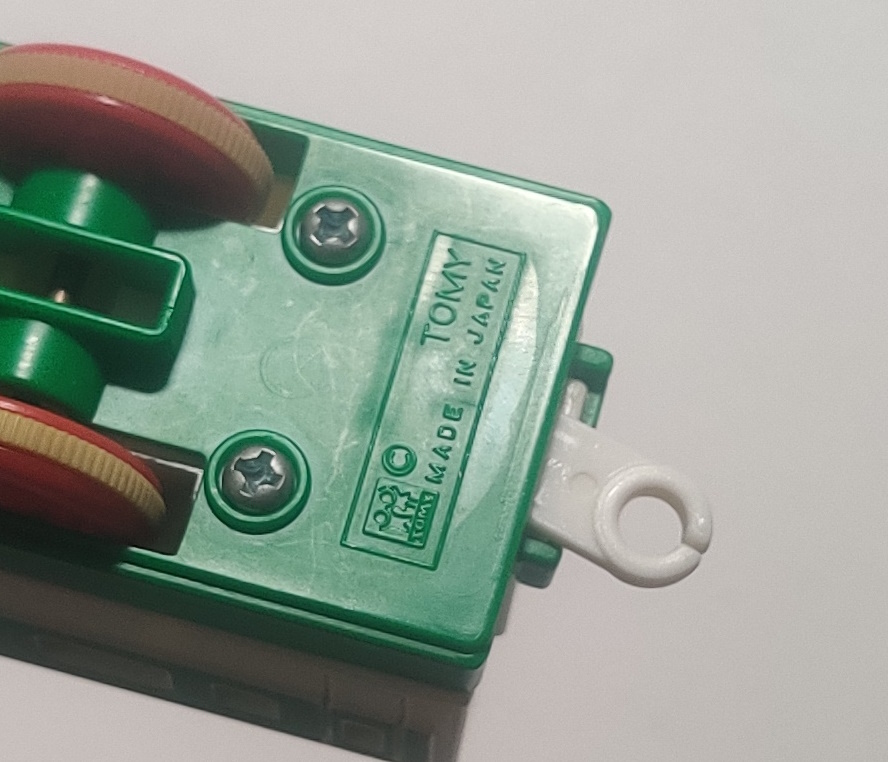
This old power 200-series Shinkansen comes from the Tohoku Joetsu Shinkansen Deluxe Set and was most likely produced in 1982 as that was the only year the set was on sale. The rim-drive tires are currently original but have hard-rotted and need to be replaced for the train to work properly on inclines. The molding mark on the chassis includes the children logo and made in Japan.
As discussed on the rim-drive gearbox repair page, I have been trying out using heat-shrink tubing over original traction tires to be able to preserve hard-rotted rim-drive tires. I tried this method on the plastic rim-drive gearbox and found that it could still not make it up the sloping rails in the set my example came from. I tested some of the other engines I used this method on and they were able to make it up the grade. I replaced one of the original tires with the rubber pulley method and left the other wrapped in heat shrink, and the train can now navigate the slopes. I suspect it may be the motor or gearbox internals themselves that have degraded and made the gearbox harder-running. The headlight in parallel with the motor may also be drawing some of the power that could be running the motor. I will eventually try pulling the rim-drive hubs off the axles with a pinion puller and get inside the gearbox proper.


I've since come across another circa 1982 200 series from the Tohoku Joetsu Shinkansen Set. It is also in pretty nice condition.
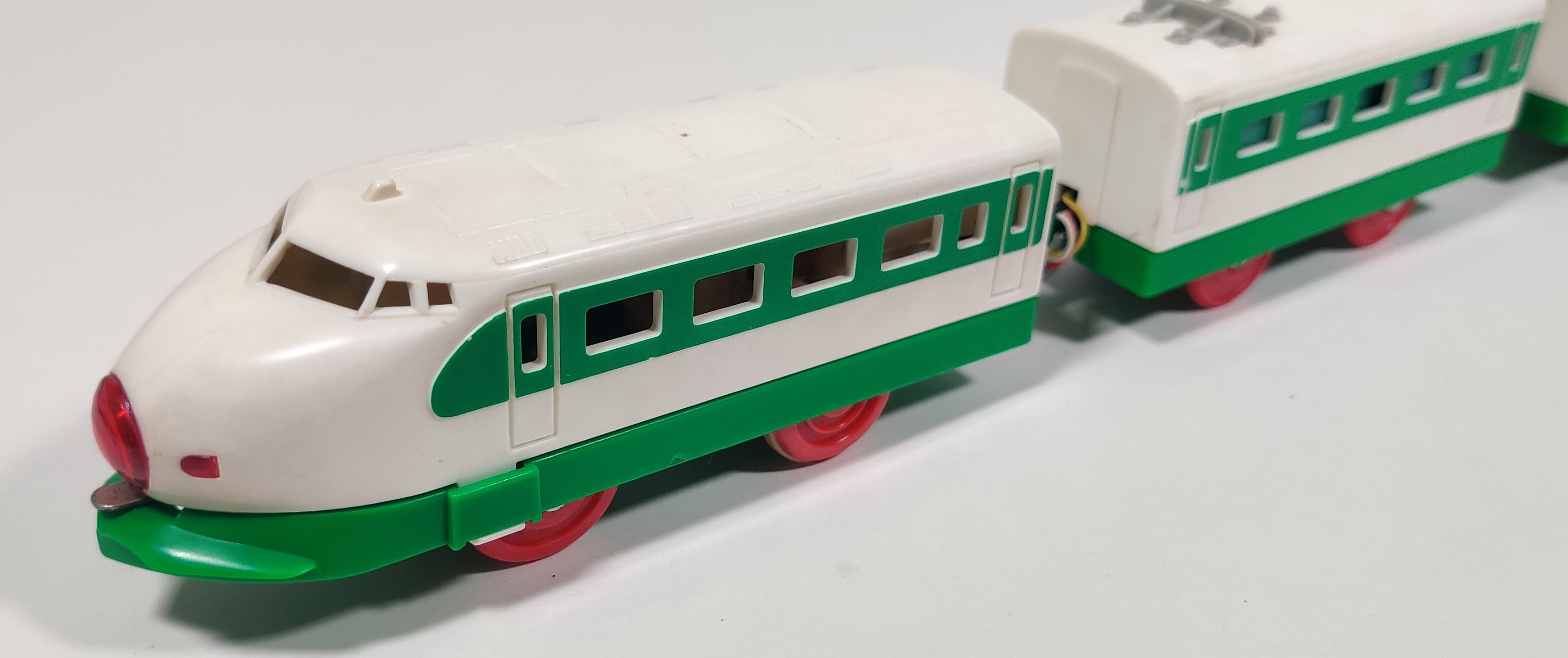

In 1984 a radio control version of the 200 series Shinkansen was released and the tooling for the intermediate and tail car chassis were updated to hold the radio receiver and antennae.


Later Japan-made intermediate cars use this tooling with cutouts in the intermediate car chassis, although the radio control tail car was seemingly not used on regular releases until the new power version.
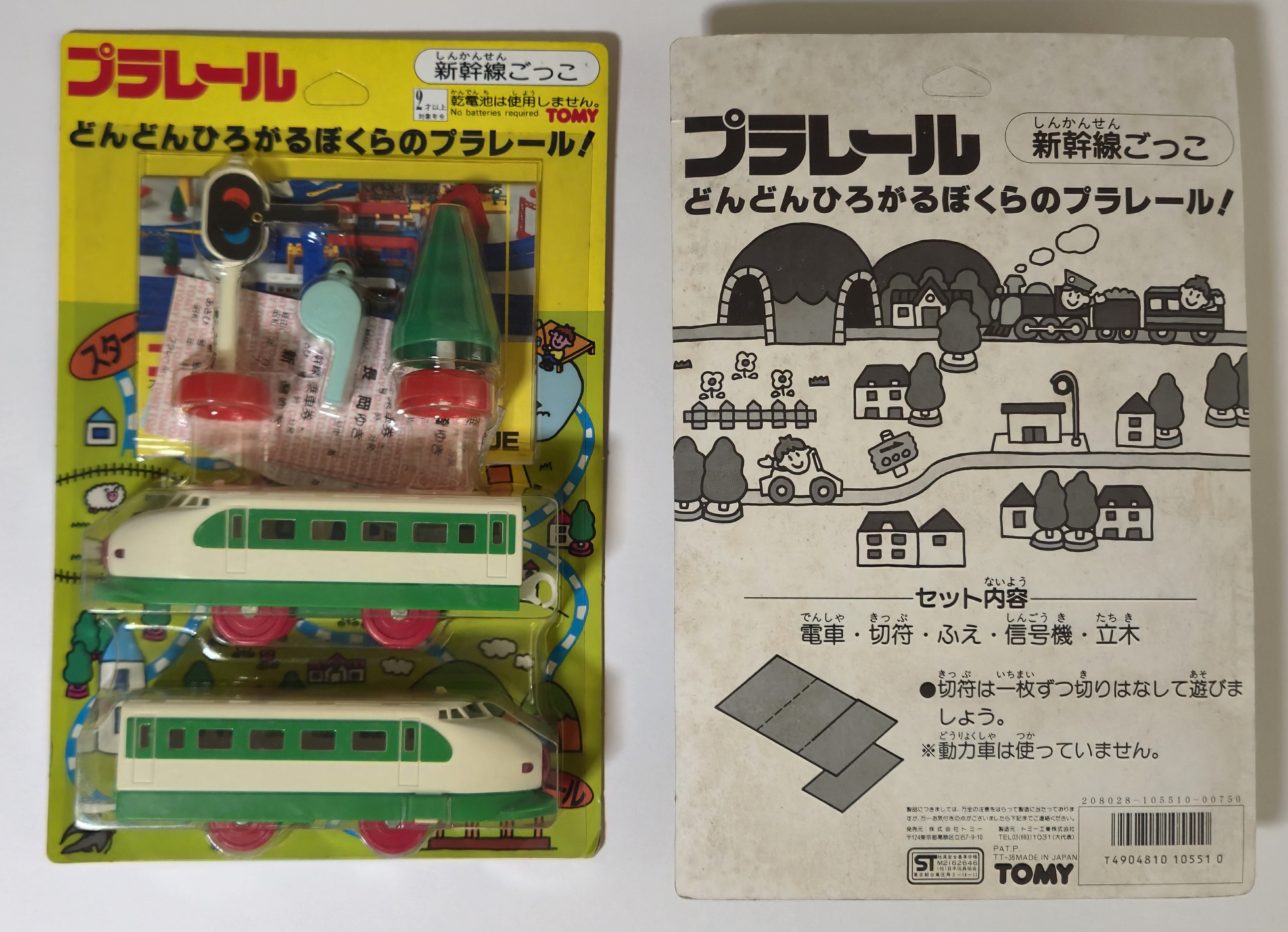
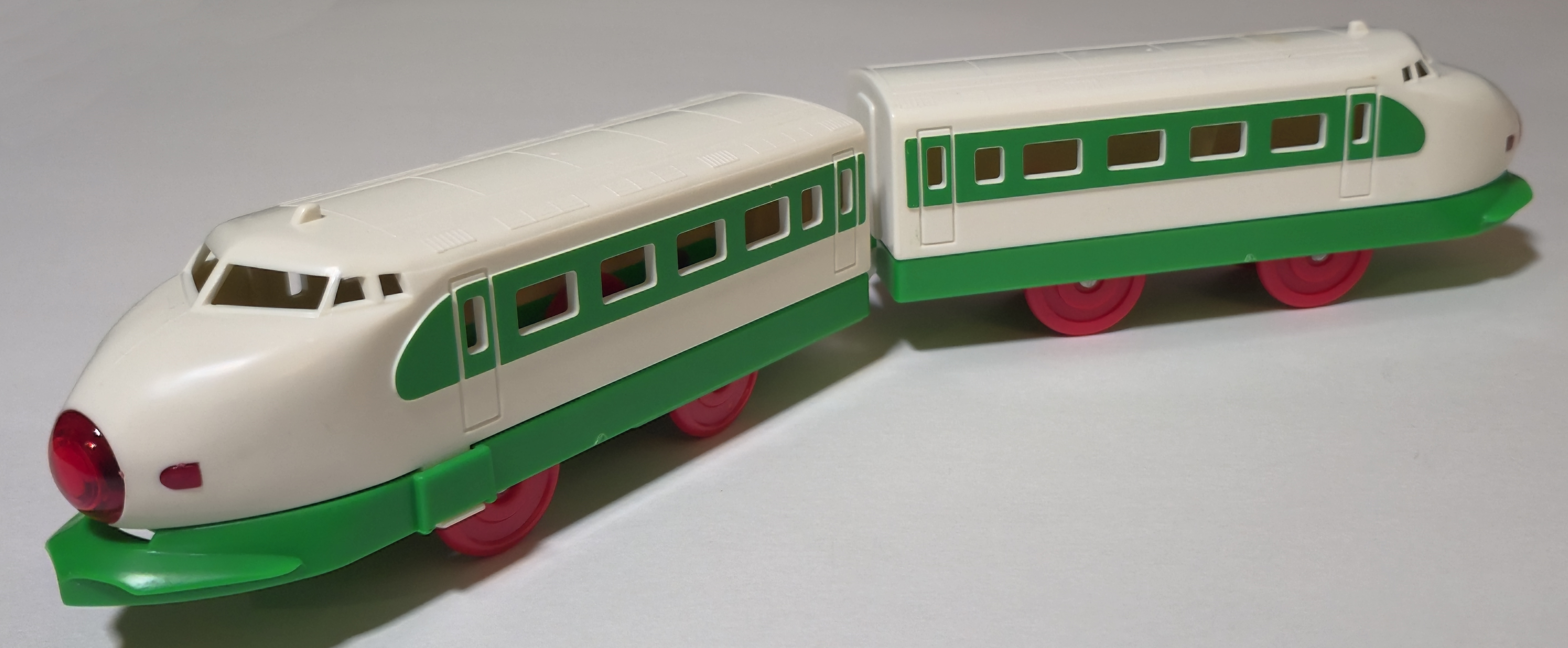
In 1987 A Play Shinkansen train was released as part of the Pretend Plarail series of unpowered two-car trains sold with accessories, and a version of the old power 200 series without the gearbox, contact strips, or light appeared. The tail car from these trains is the R/C version of the tooling. There is also a rereleased version by Tomymate that uses the new power shell.
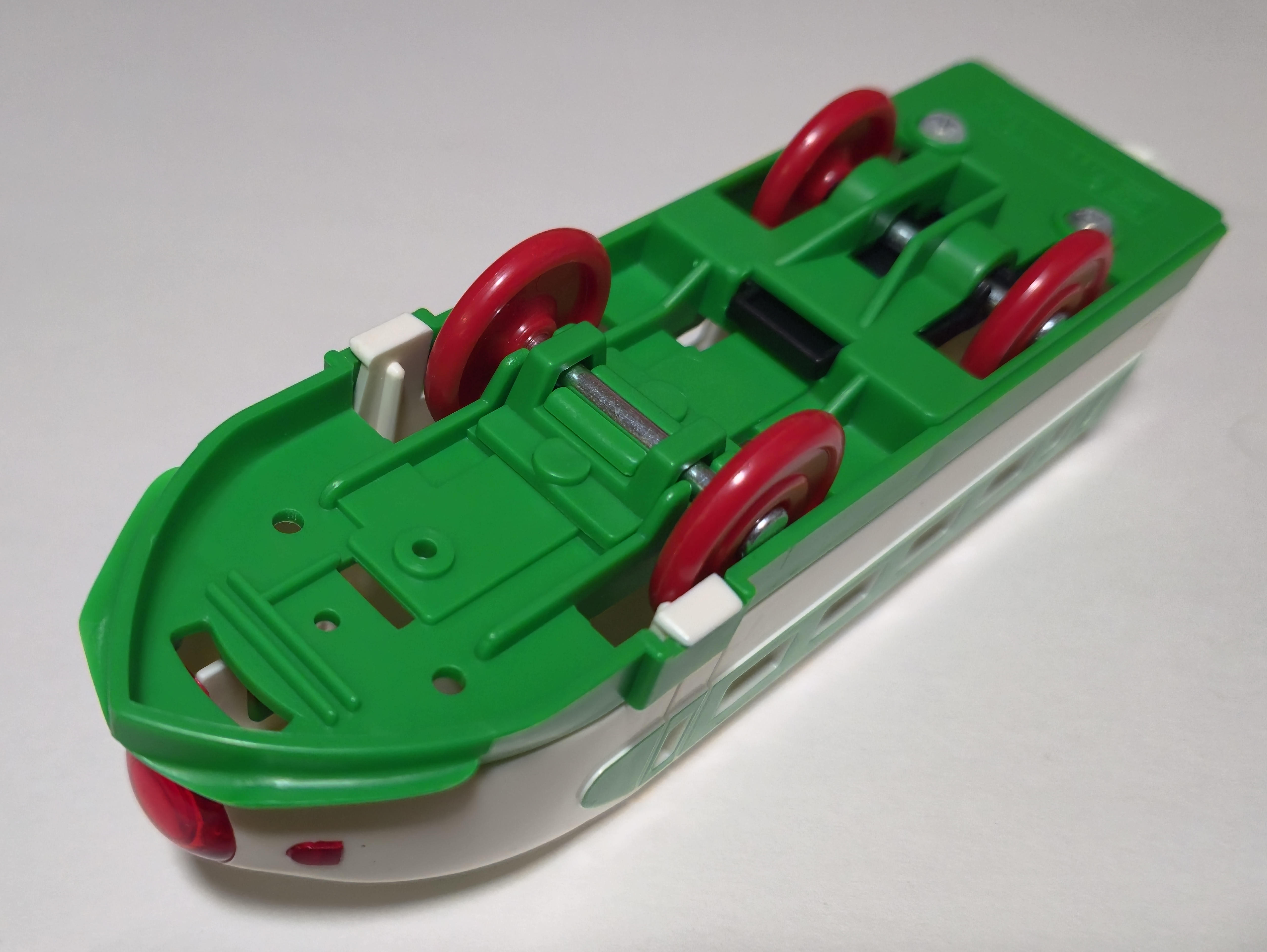

Tohoku Joetsu Shinkansen with Light (New Power) (1987)
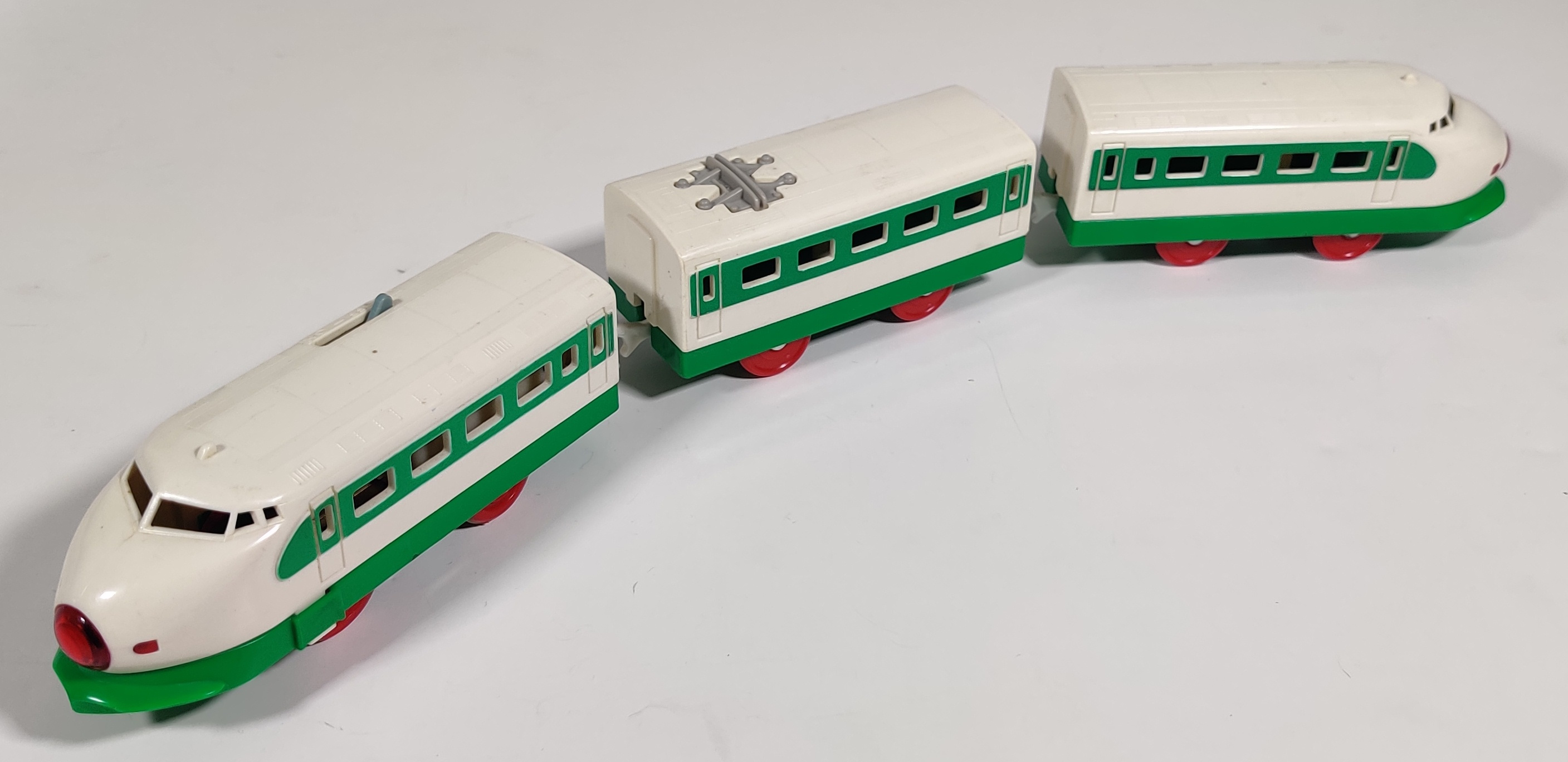
In 1987 the 200 series Shinkansen was rereleased with a new axle drive new power gearbox in 6th generation packaging. This version of the illuminated 200-series is based on the same moldings and thus looks very similar to the earlier 80s version. The example pictured here comes from a 1987 copy of the Tohoku Joetsu Shinkansen with Light Set.
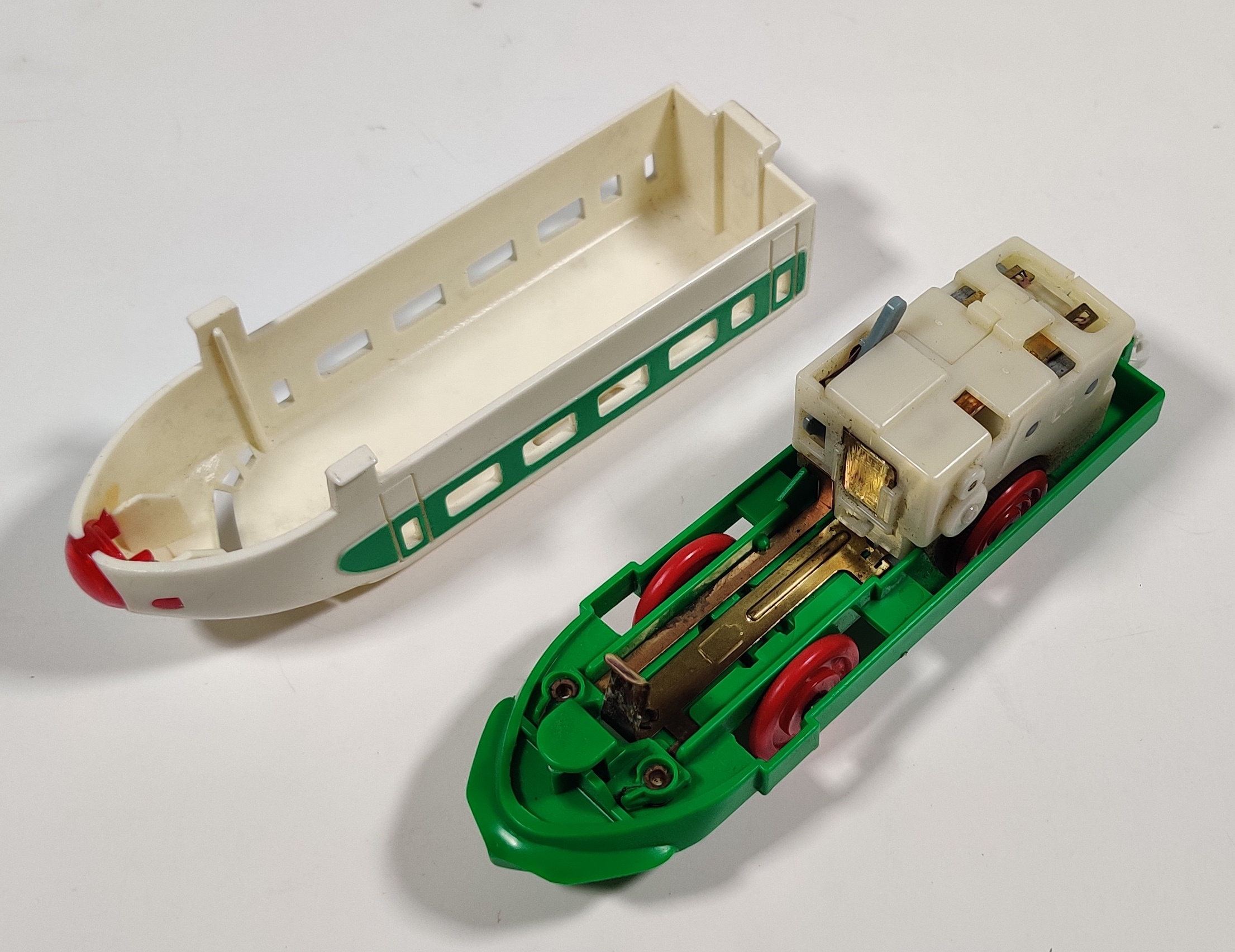
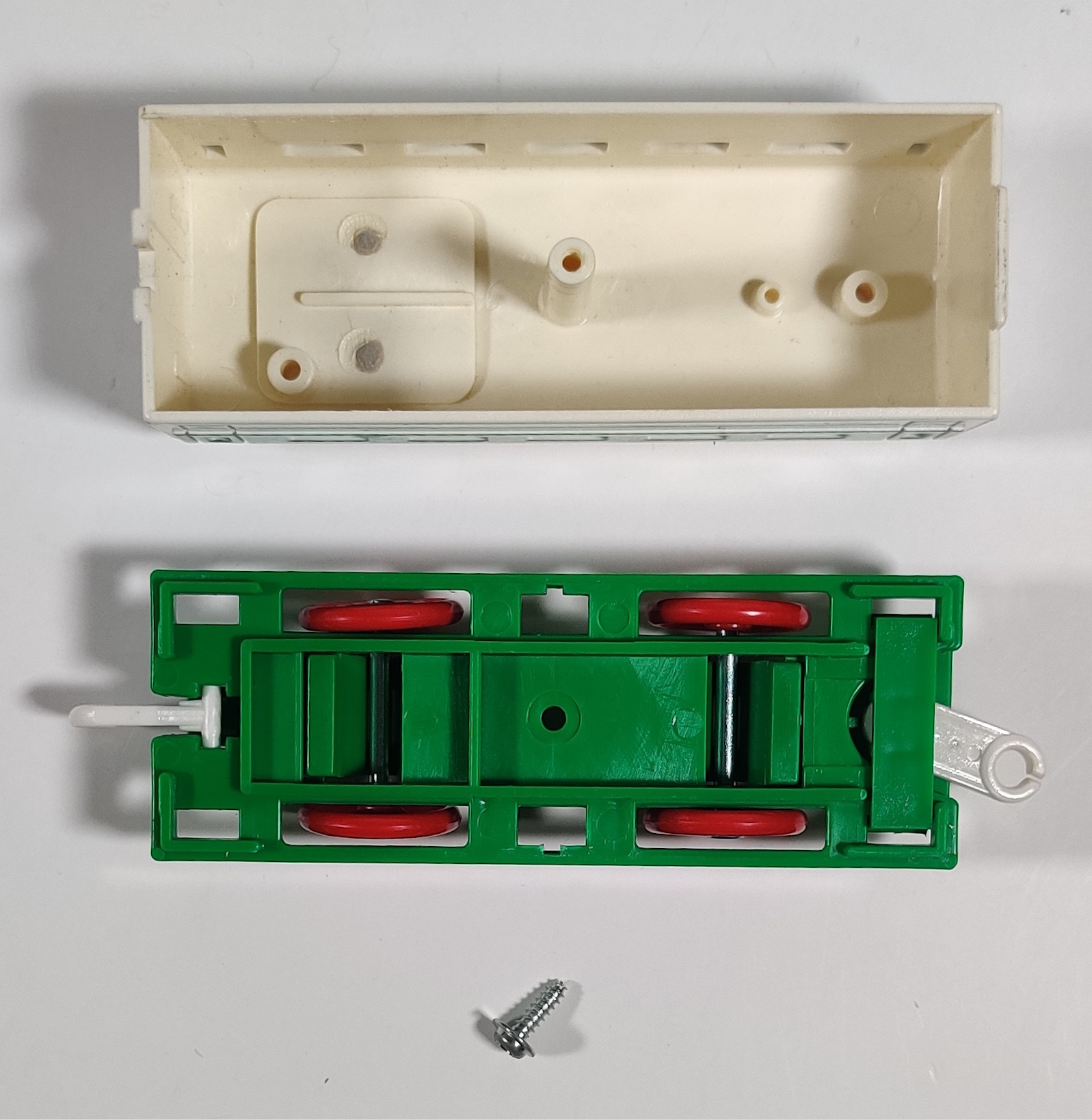
The chassis is updated with the new power direct-drive gearbox, seen here with Japanese brass contacts and bluish-grey power switch. The light in the nose is still an incandescent bulb connected to the negative battery terminal and a contact strip running back up the chassis from the positive side, but the power switch is now on the positive side of the circuit in the gearbox instead of the negative side at the front of the chassis. The chassis and intermediate car are similarly based on the radio control 200 series, with cutouts in the intermediate car and molding features remaining in the roof of the intermediate car.


Molded clips in the tail car chassis originally held the antennae in place.
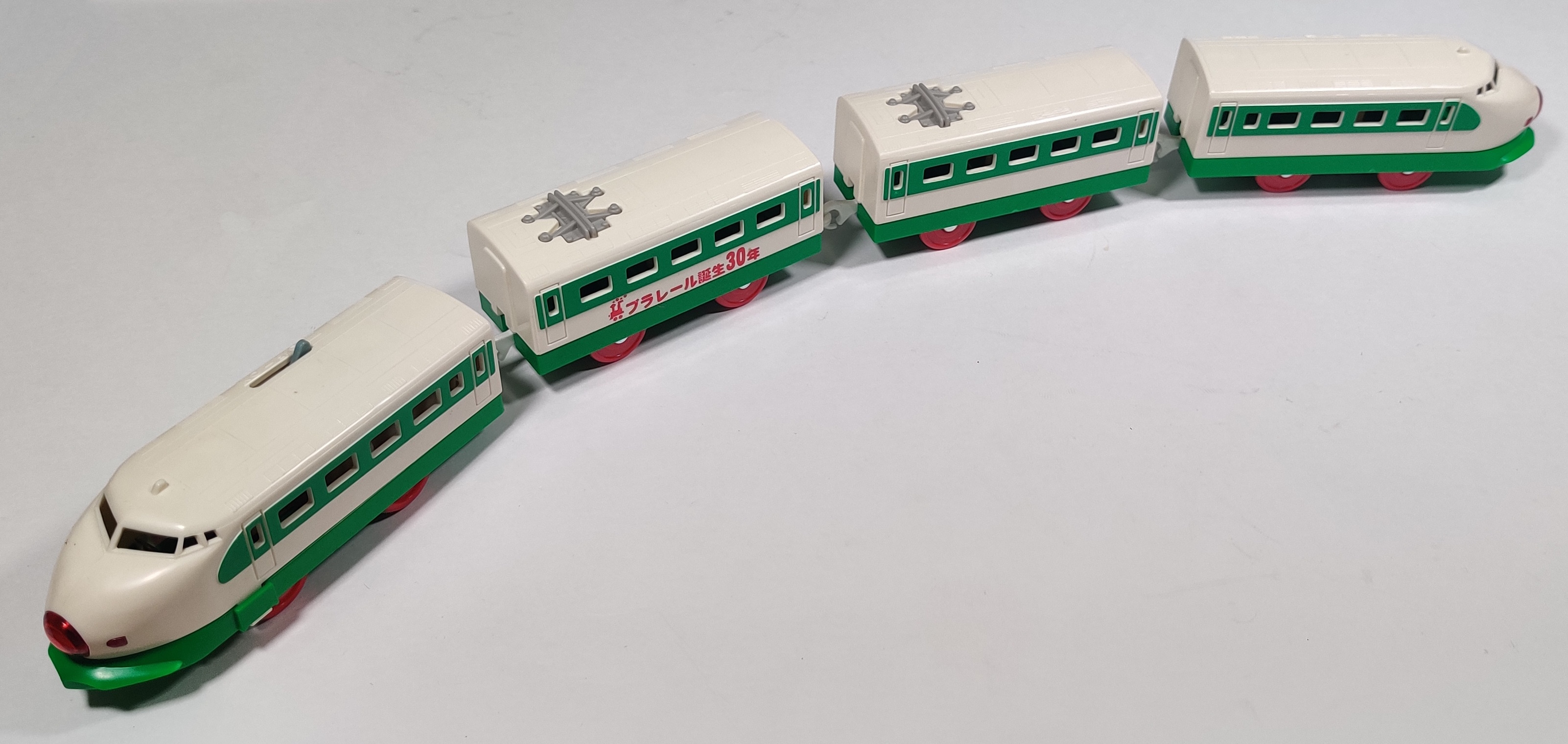
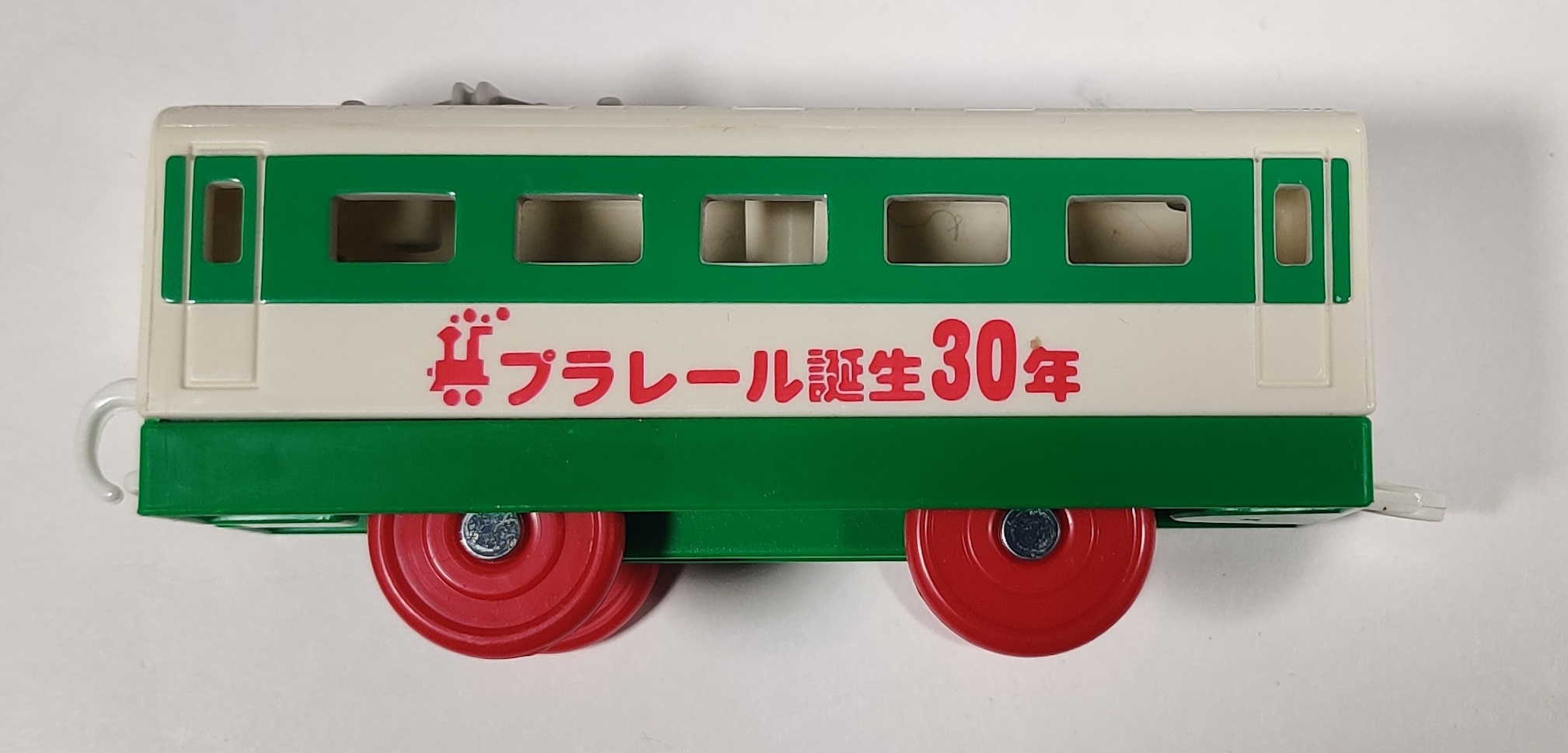
In late 1988 an intermediate car with a 30th Anniversary of Plarail (プラレール誕生30年) mark on the side was included in the Tohoku Joetsu Shinkansen with Light New Overpass Set commemorating the 30th anniversary of Plarail in 1989. A similar car was also produced for the Hikari with Light.
Tohoku Joetsu Shinkansen with Light (Thailand production) (1990s)
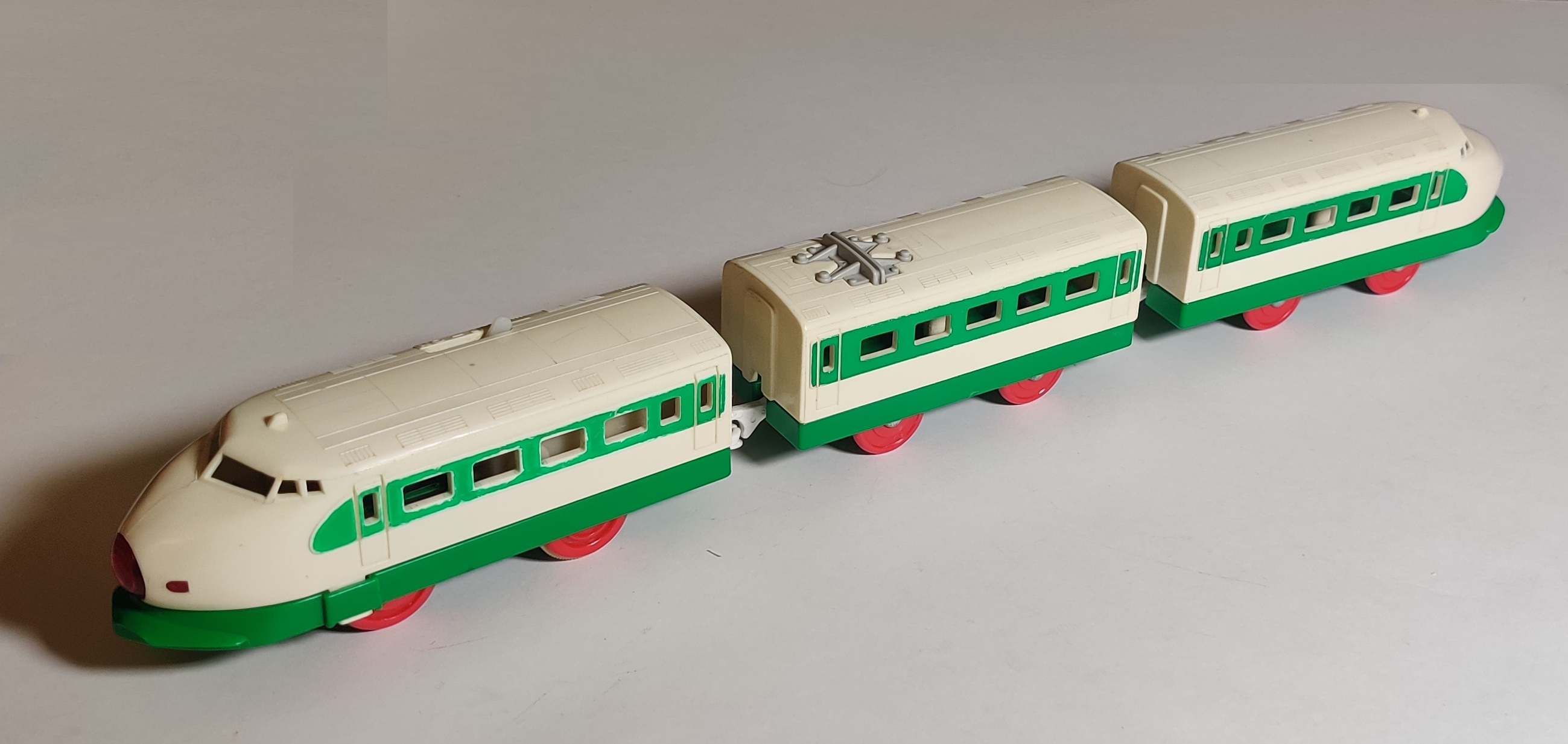
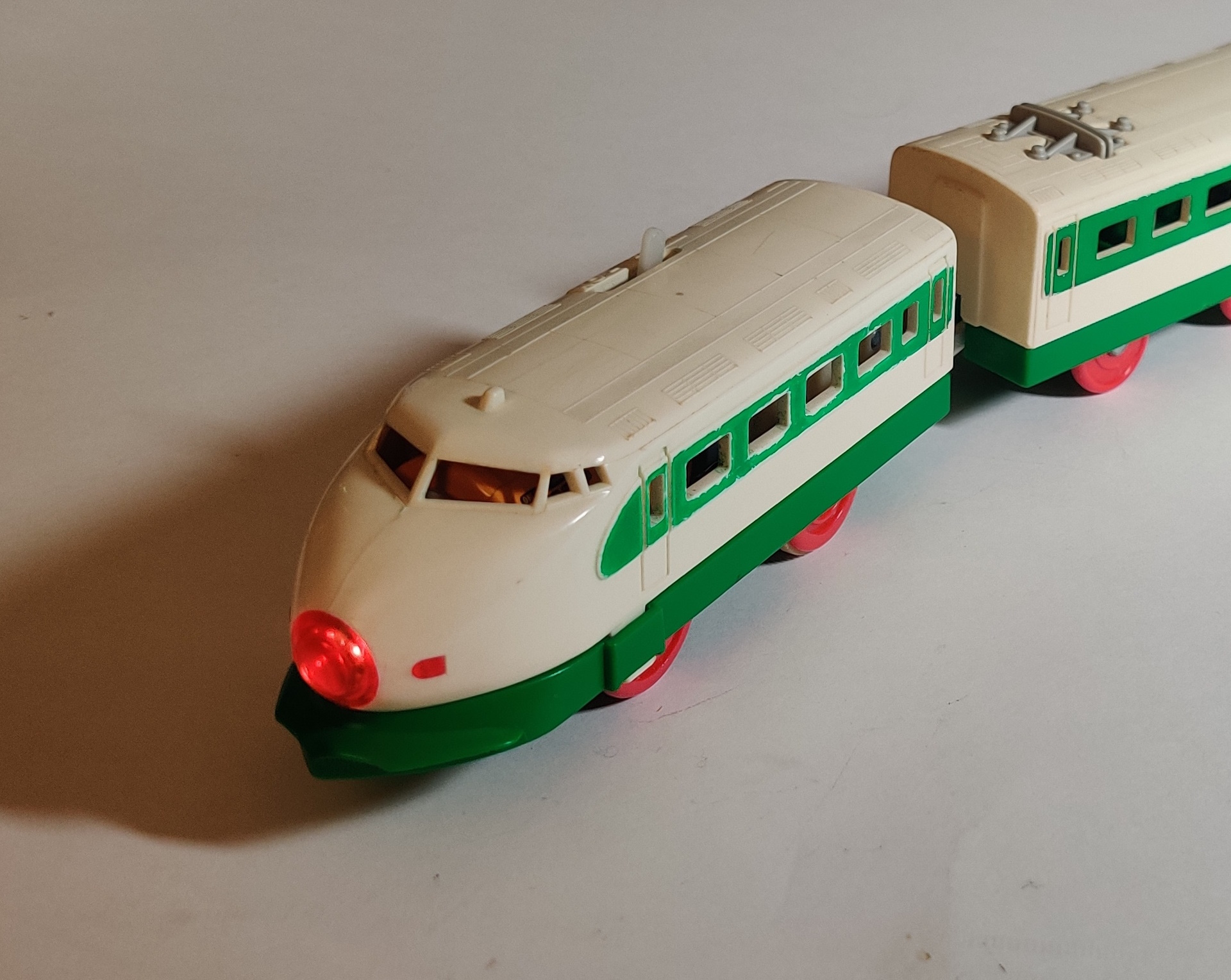
The 0 and 200 series were some of the earliest molds to move to Thailand, with individual release middle cars and the 0 series appearing in the First Set in 1989, the first year of Thailand Plarail production.
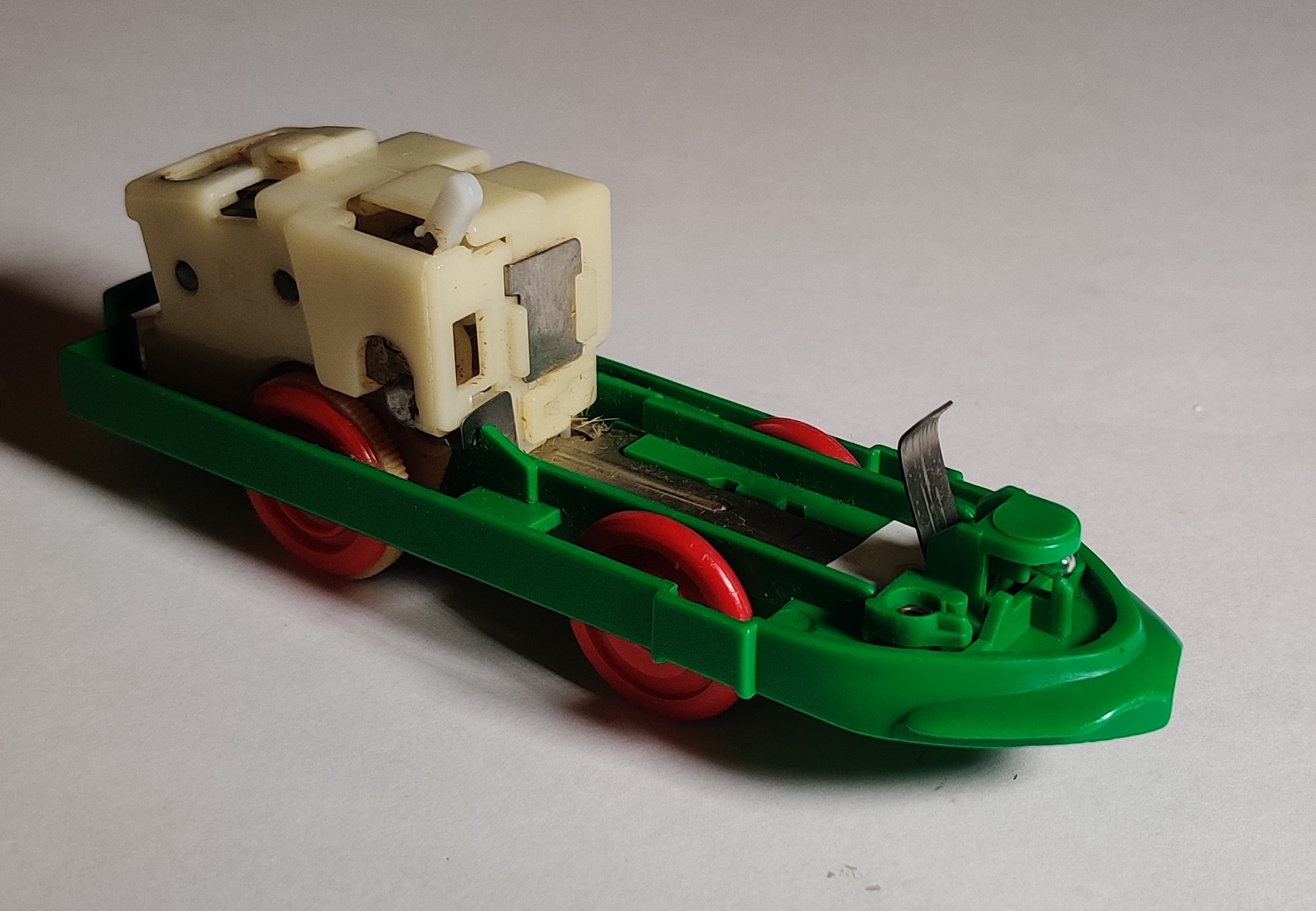
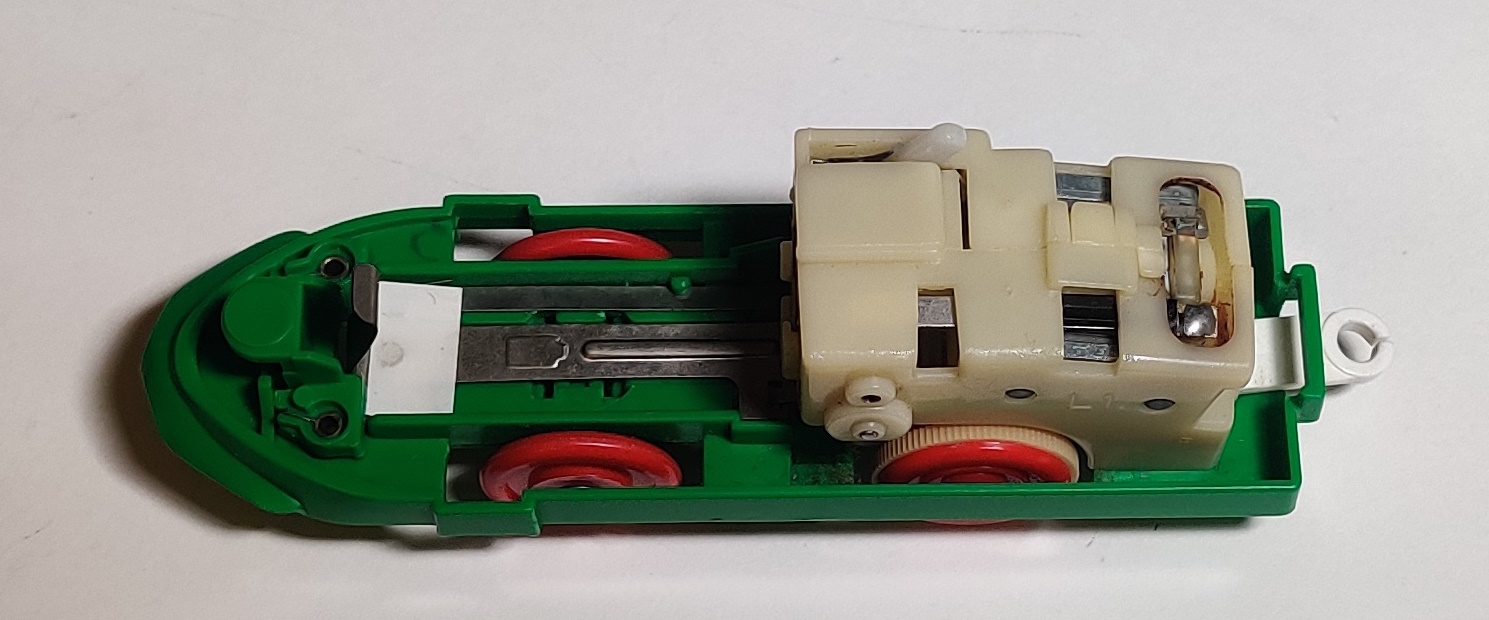
Thailand-made examples of the Tohoku Joetsu Shinkansen use a single-speed new power gearbox with white power switch.
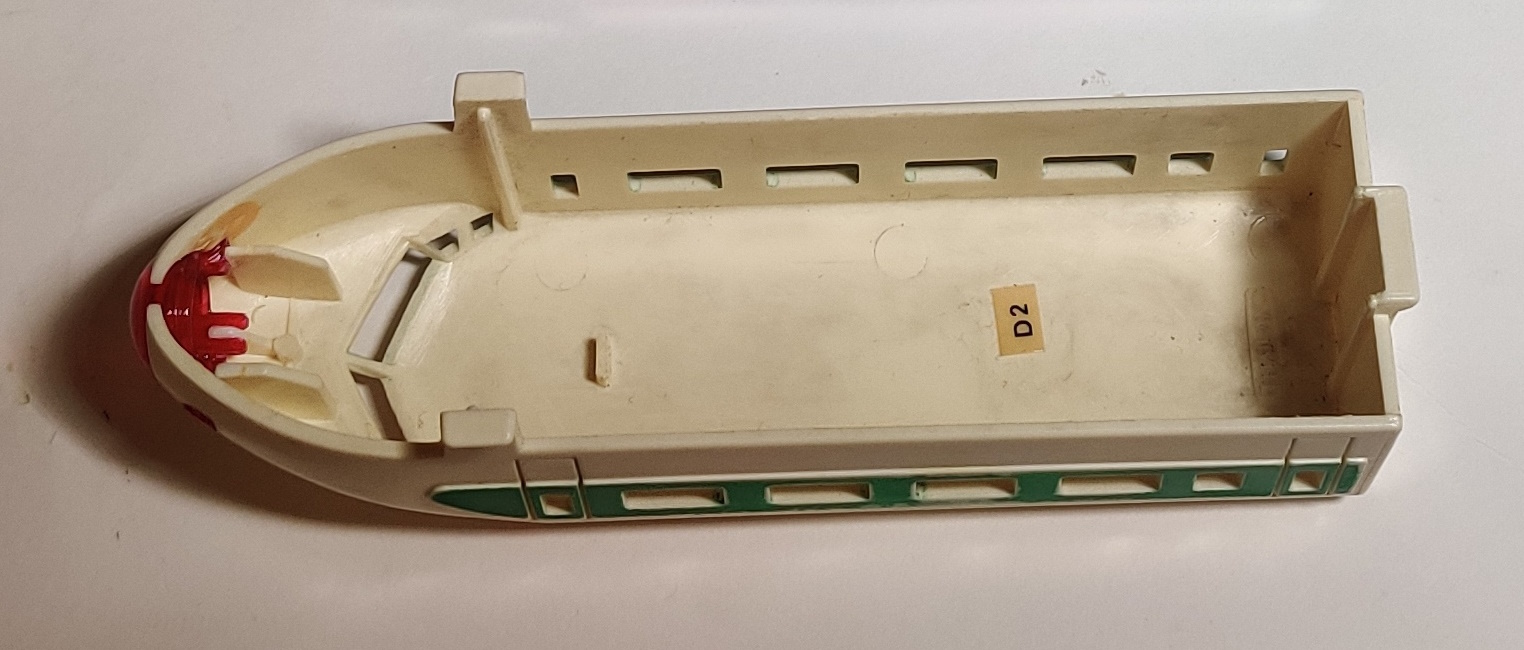
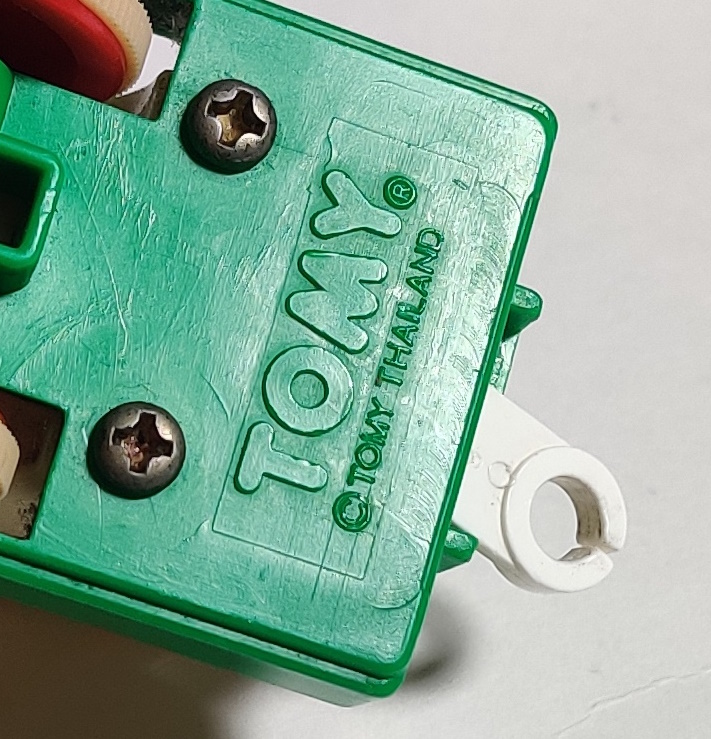
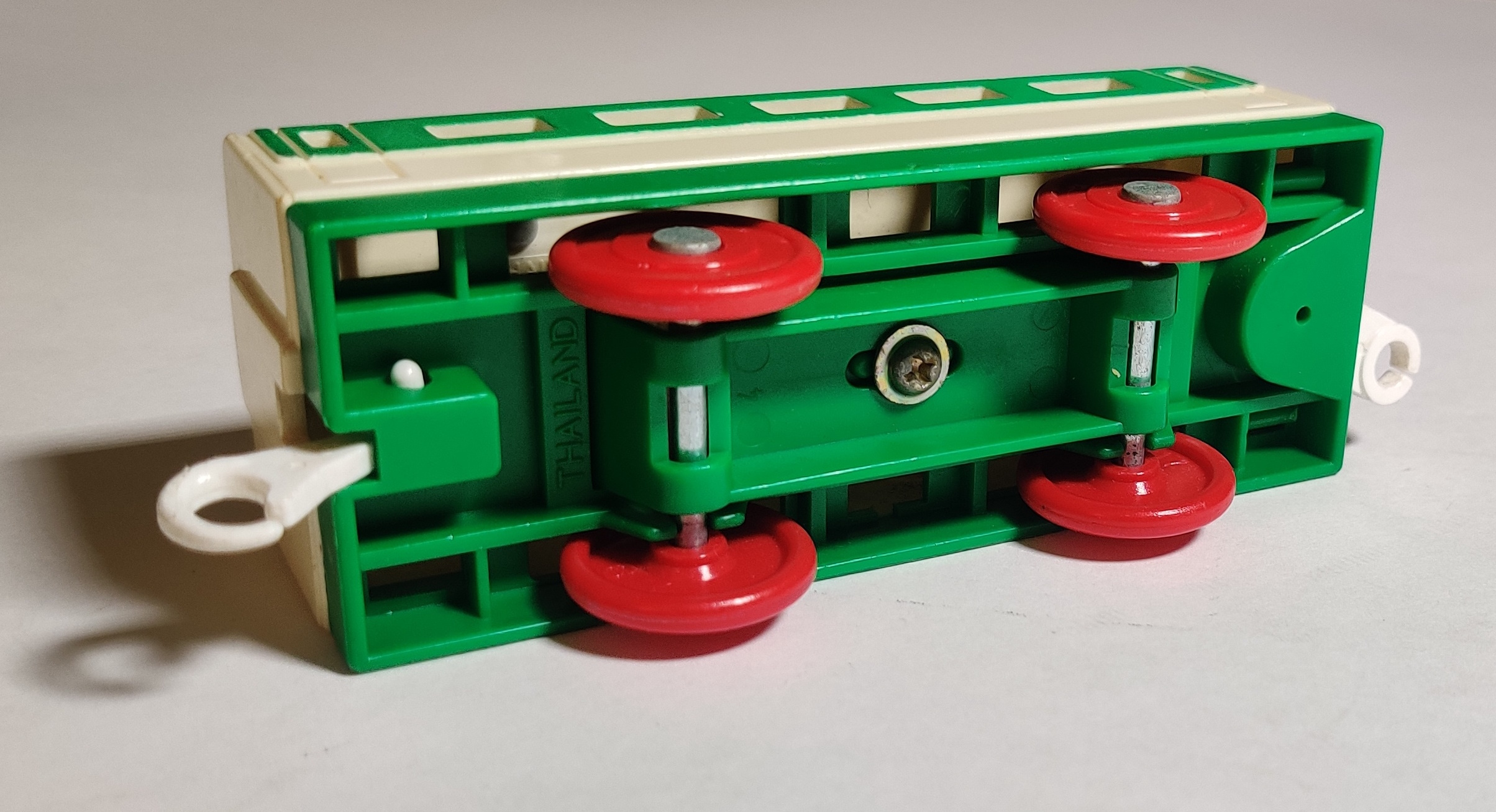
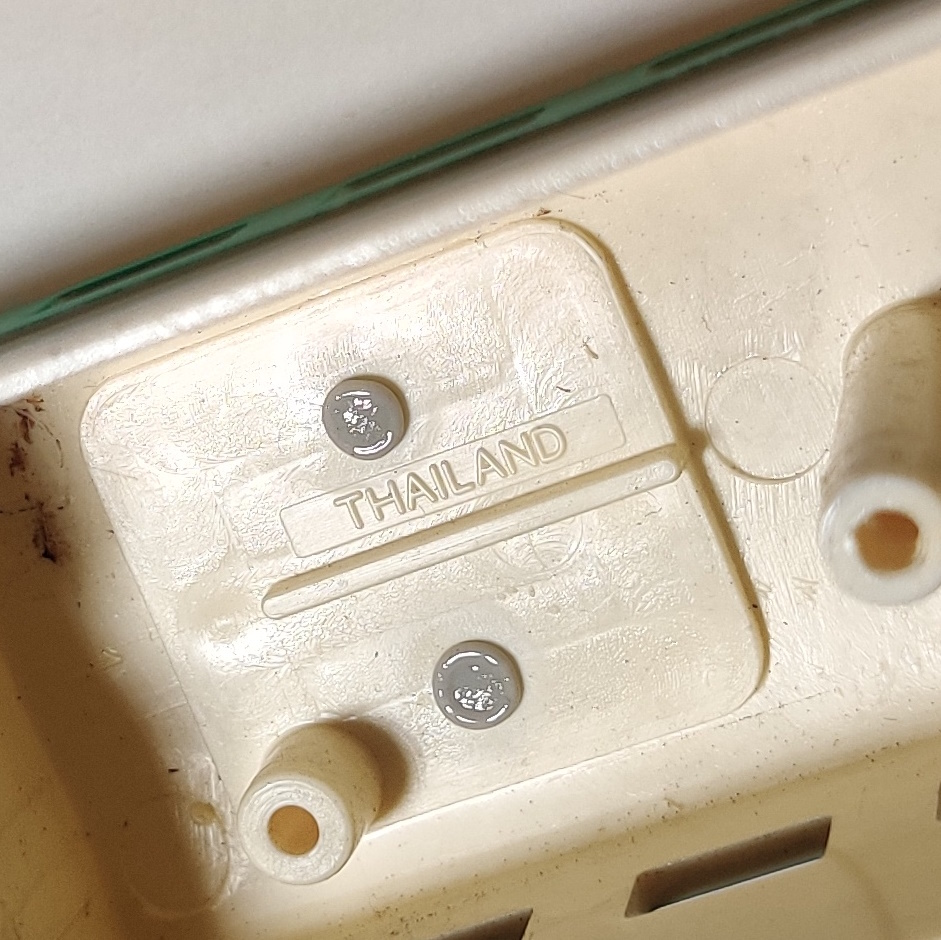
My new power example was produced in Thailand in April 1992 towards the end of production of the Tohoku Joetsu Shinkansen with Light. Shell and chassis molds all say Thailand and the power car has the curvy Tomy logo and Tomy Thailand text.

The intermediate and tail car toolings are both updates of the 1980s Radio Control Tohoku Joetsu Shinkansen.
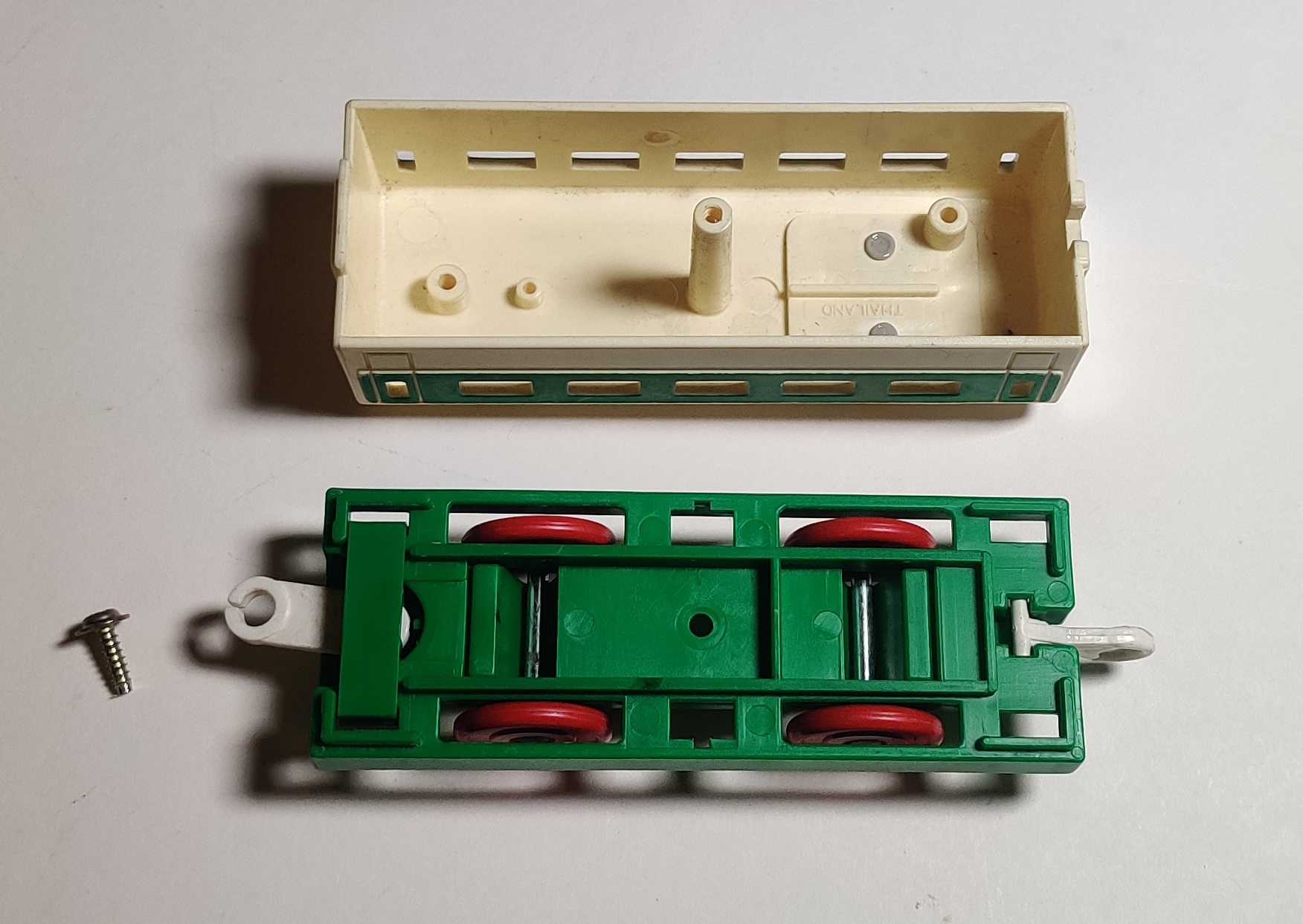
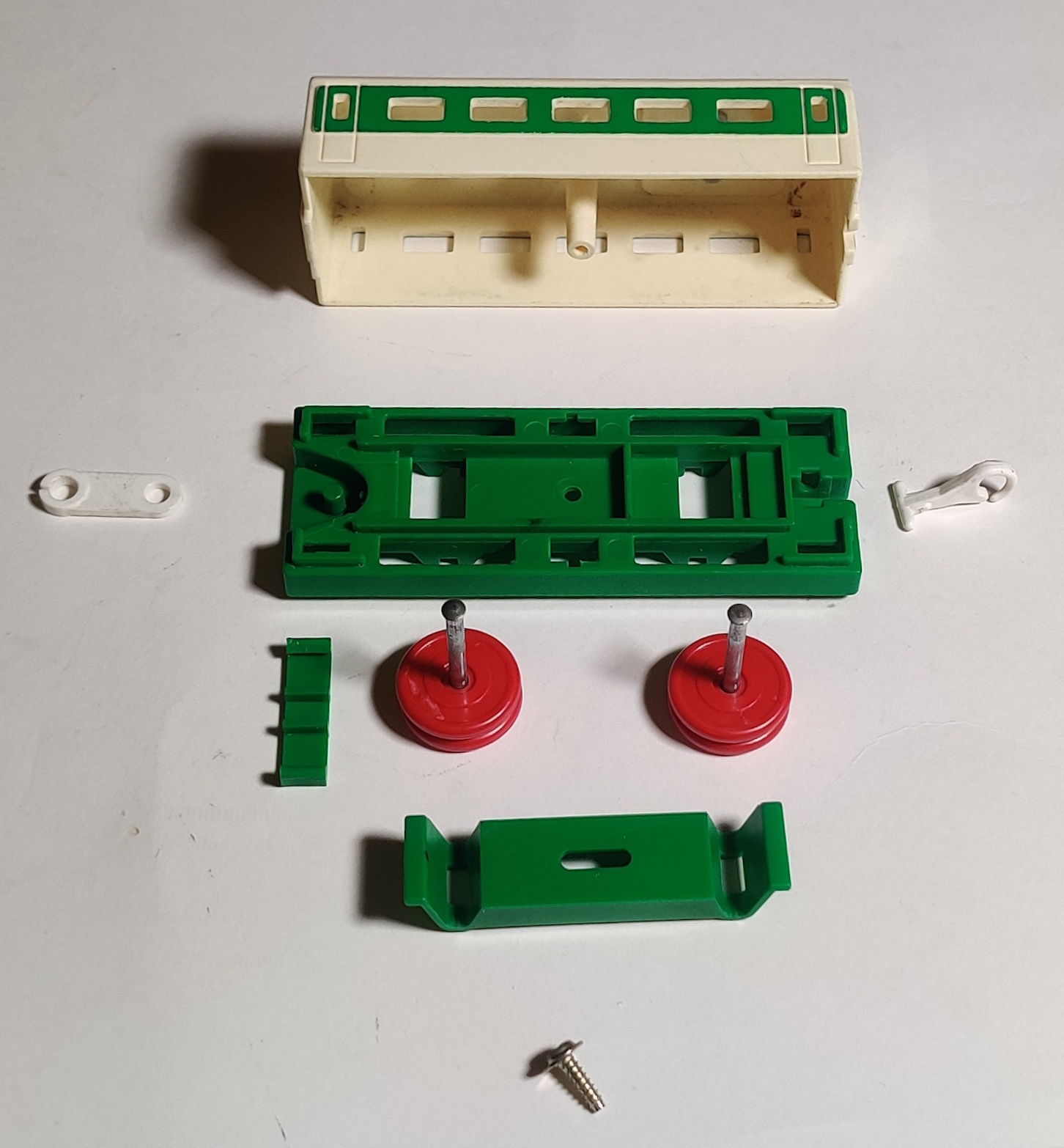
The intermediate car has a revised chassis with a plastic clip that holds the rear coupler in place. The wheels and front coupling assemblies are unchanged from Japanese-production examples.
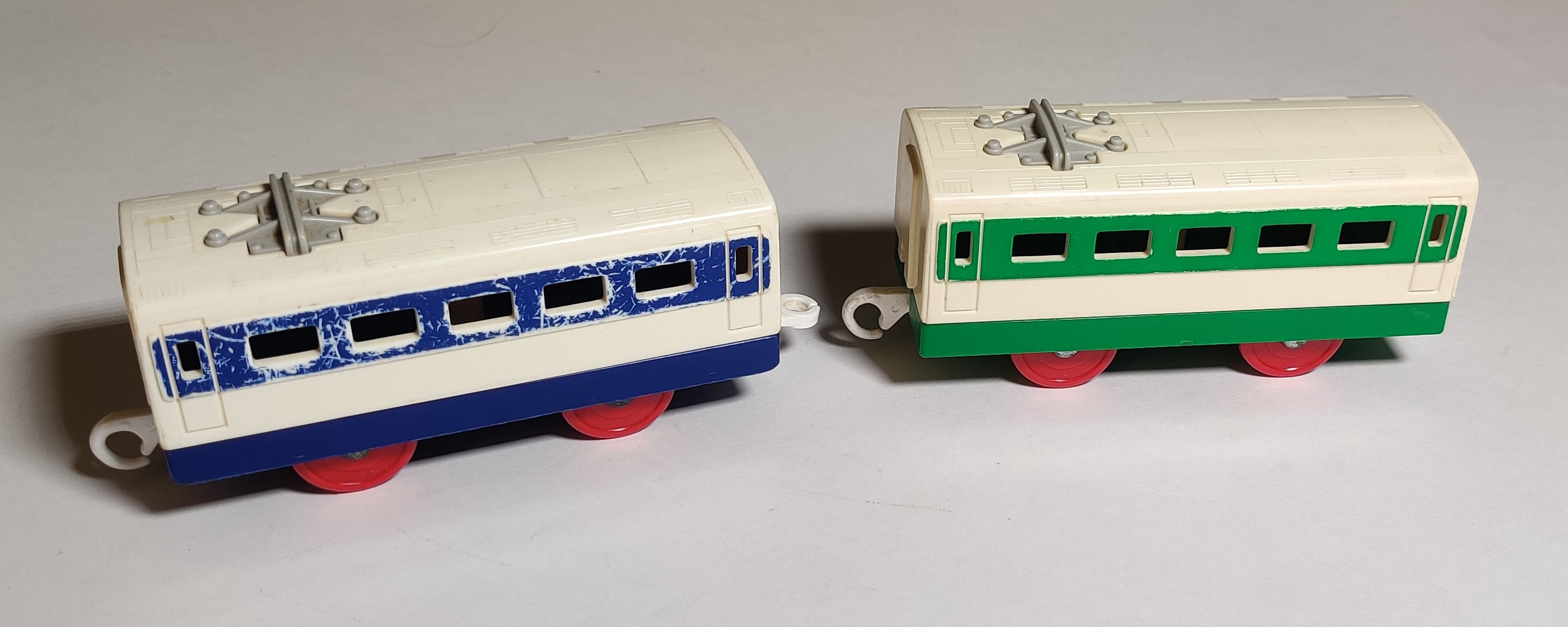
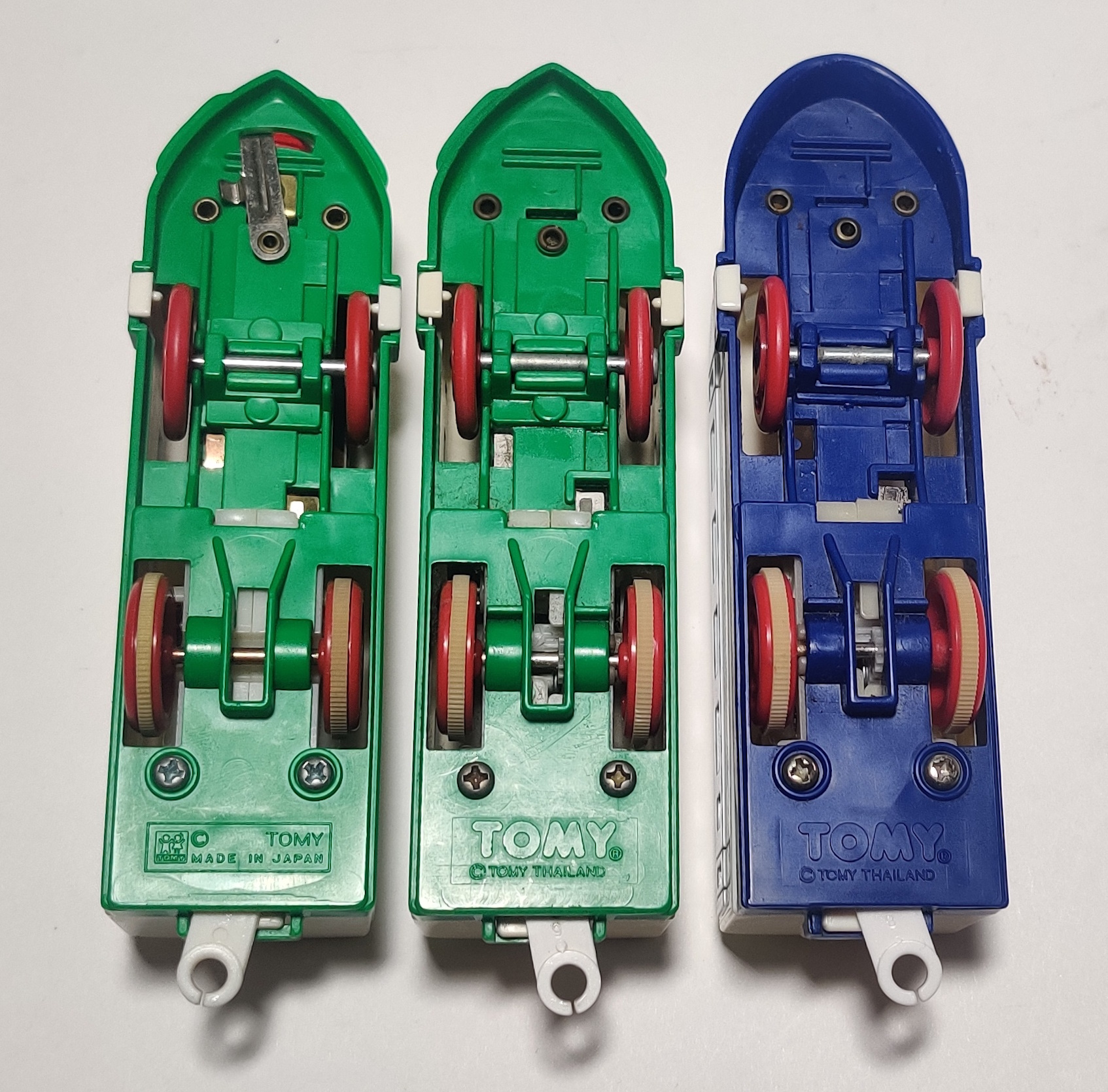
As before, although the lead and tail cars have different chassis molds, intermediate cars for the 0 and 200 series from the same eras are seemingly identical other than the color. At some point in the divergence of the molds the 200-series chassis mold lost the rings around its screw holes.
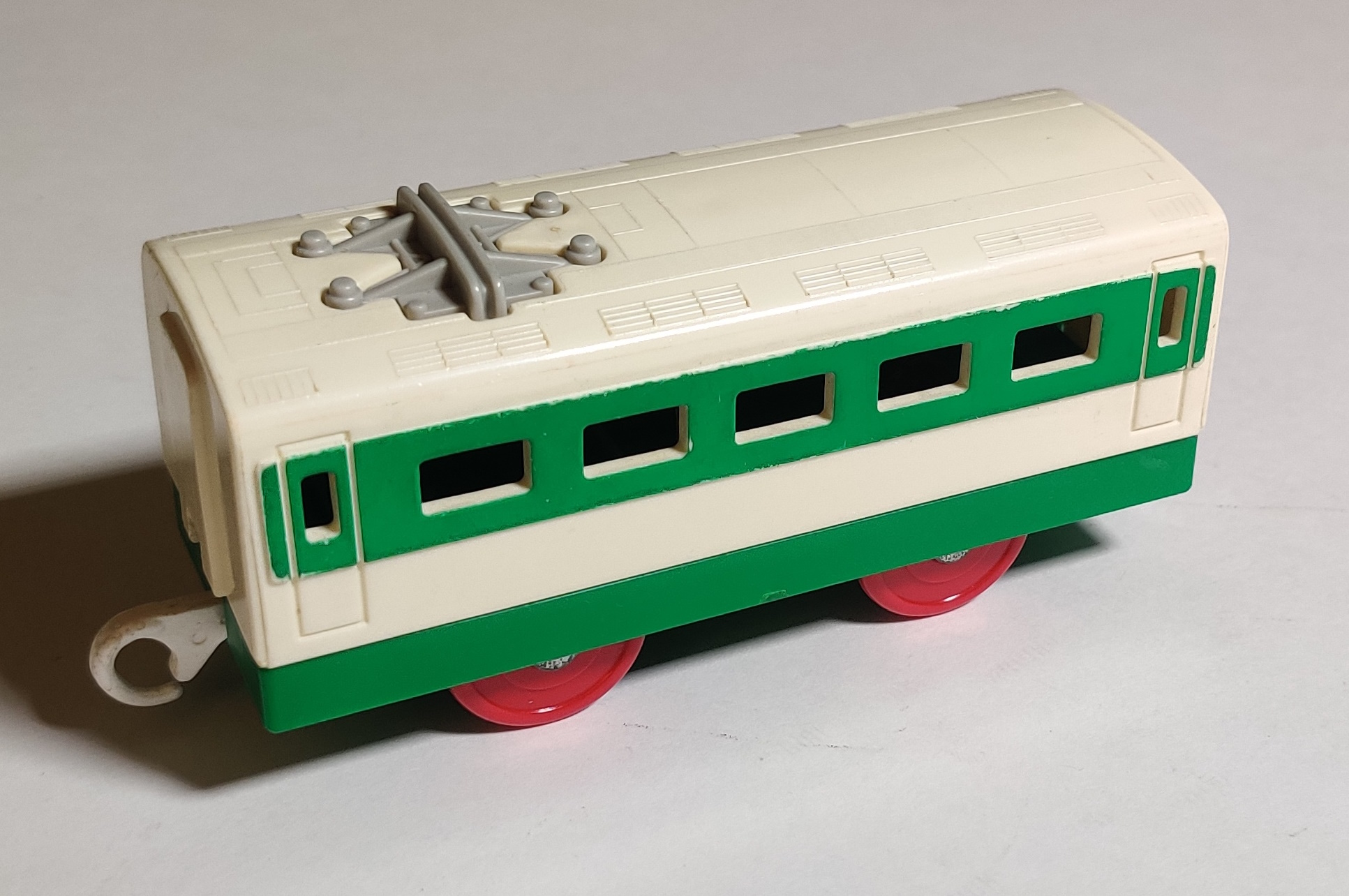

Throughout this period, green 200-series intermediate cars were available for sale as individual bagged items. These cars were some of the earliest products produced in Tomy's new Thailand factory in 1989. I have an extra intermediate car from the same Thailand era as my new power 200 series and the train looks even better with it. The three-car set is a classic element of Plarail but many trains look so much nicer with even one extra car.
Tomy Express 200 series (1989)
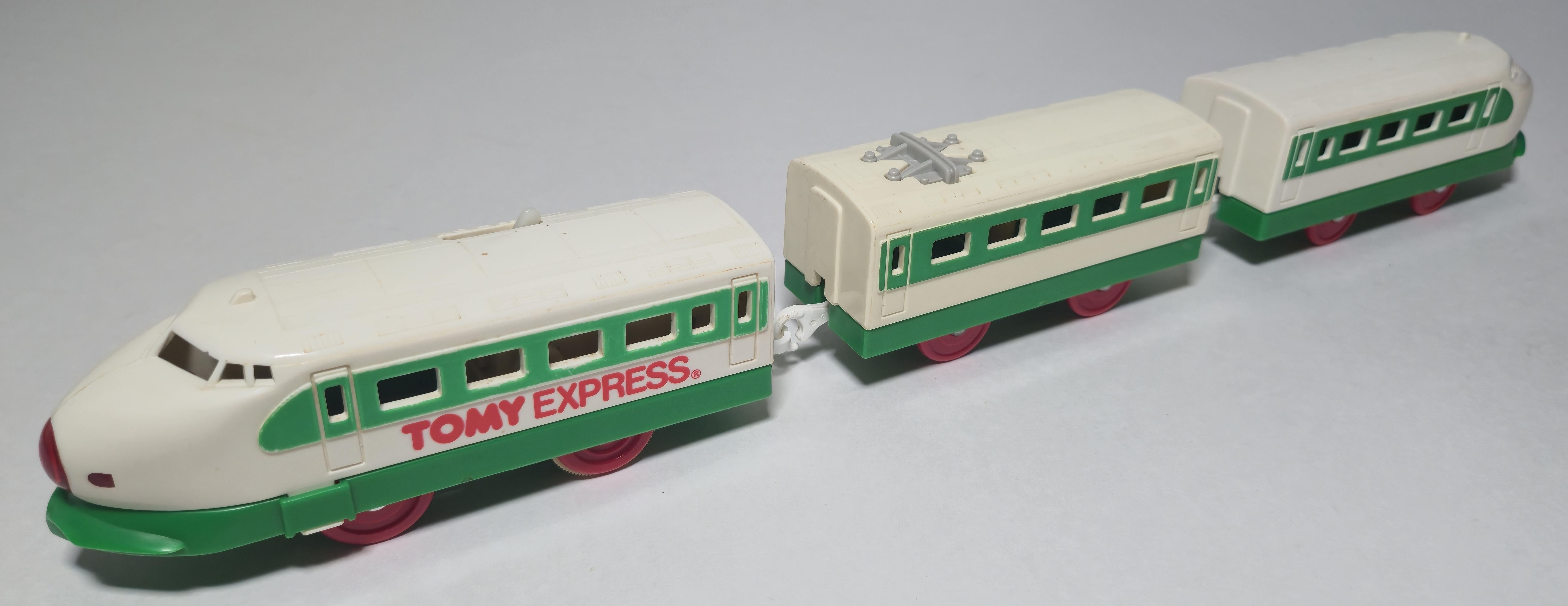
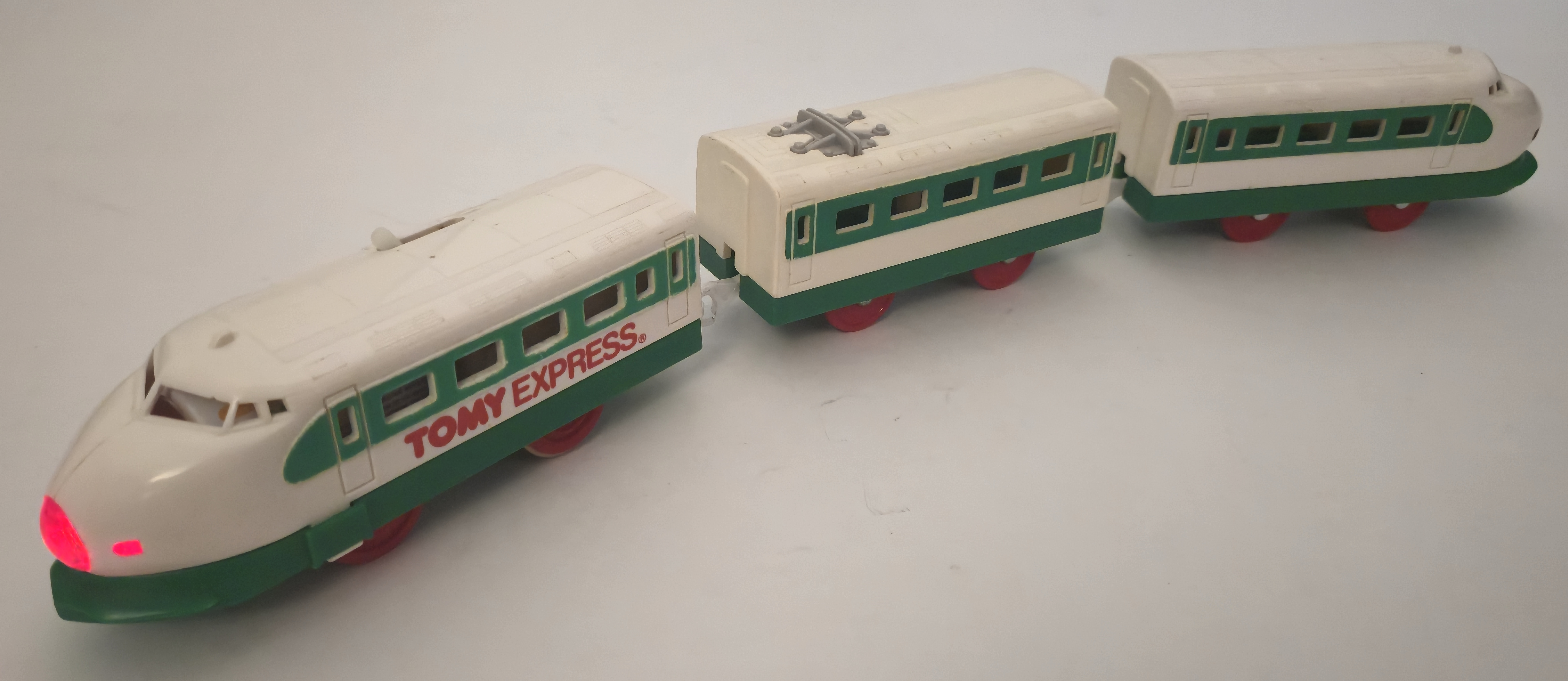
Starting around 1989 the German Tomy Express Set 01 from the Tomy Express series included a 200 series Shinkansen with light feature and red TOMY EXPRESS text on the side of the power car.
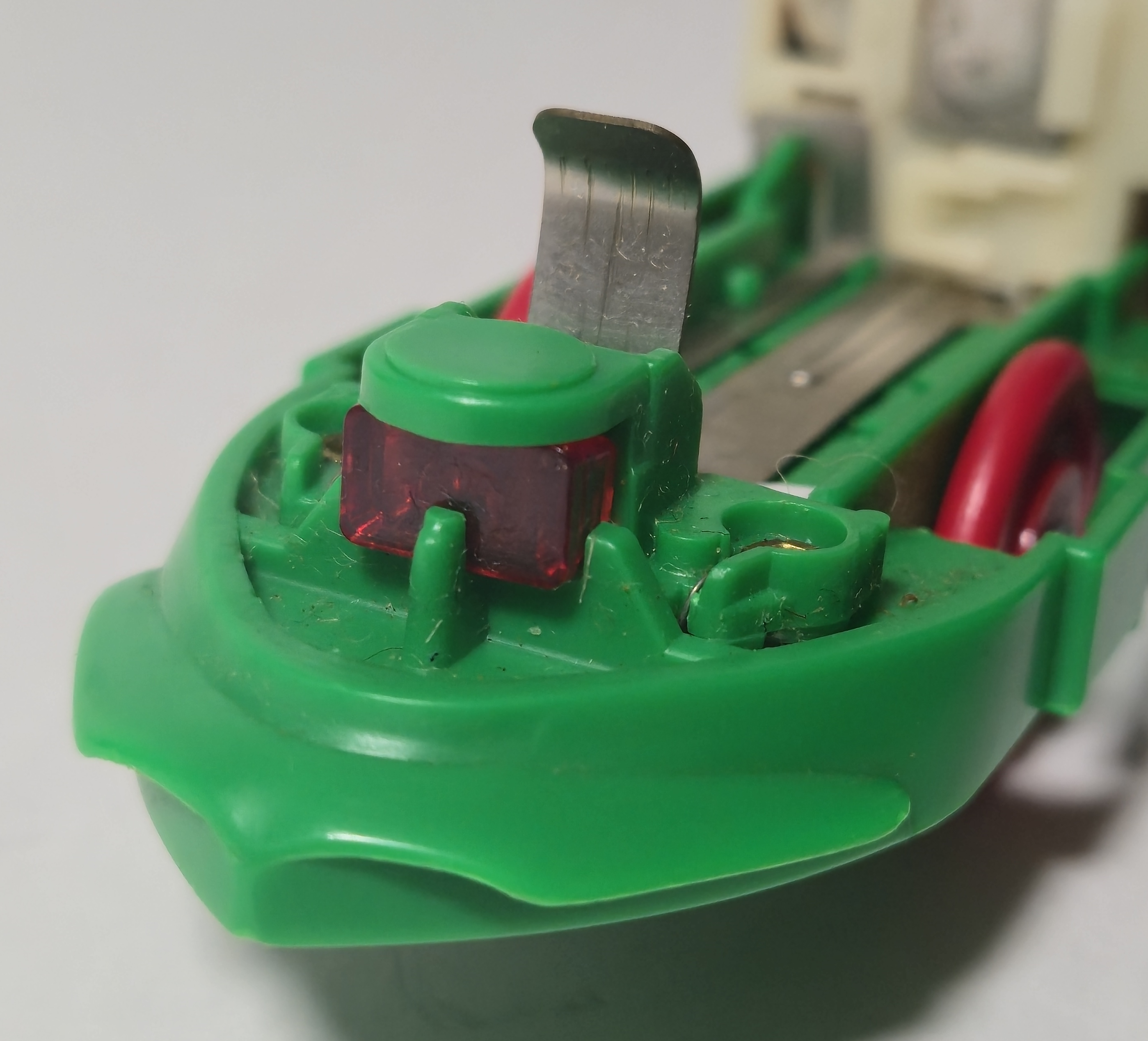
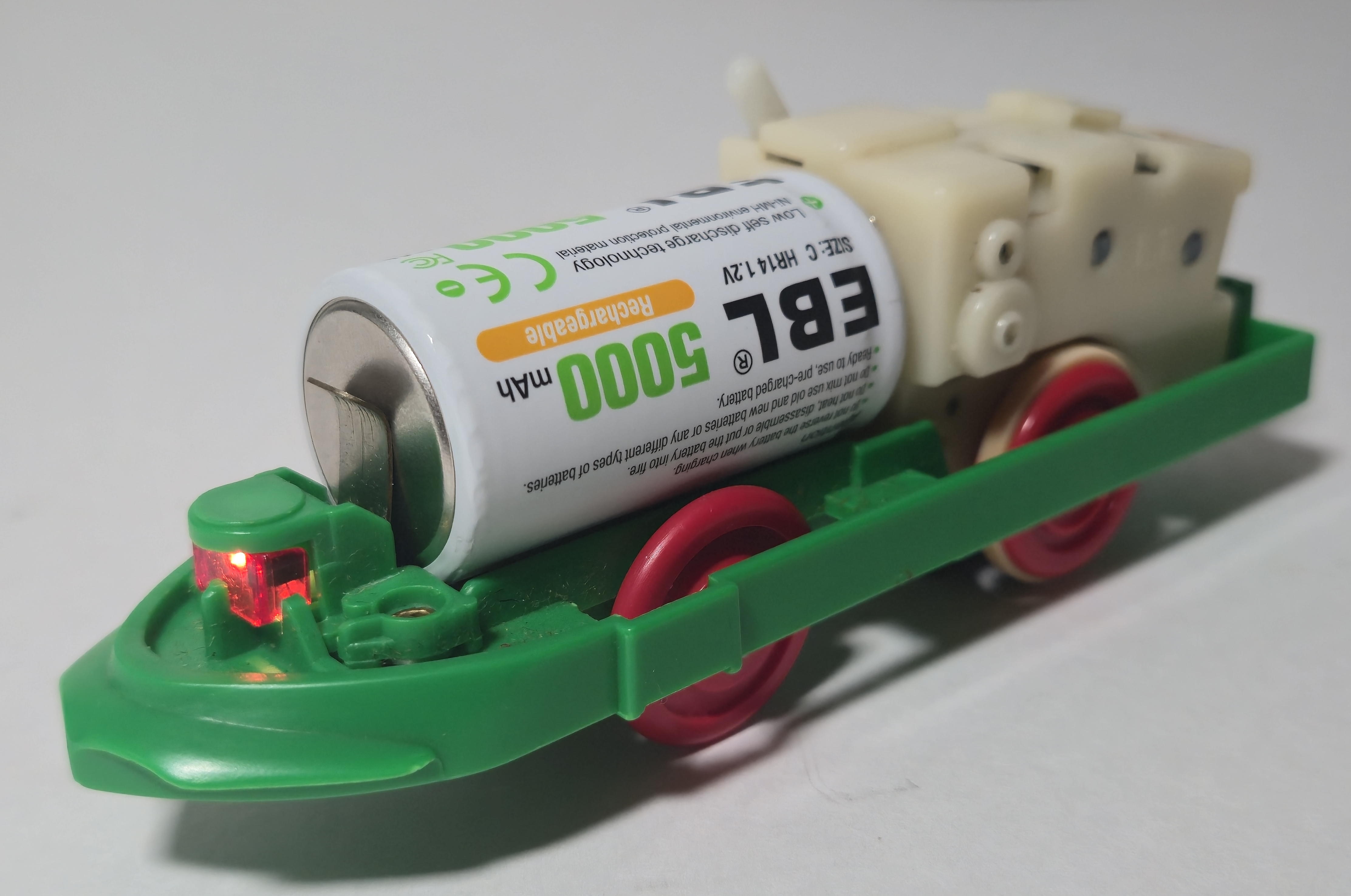
This train has a red plastic lens in front of the light that I haven't seen on any other trains descended from the Hikari with Light.
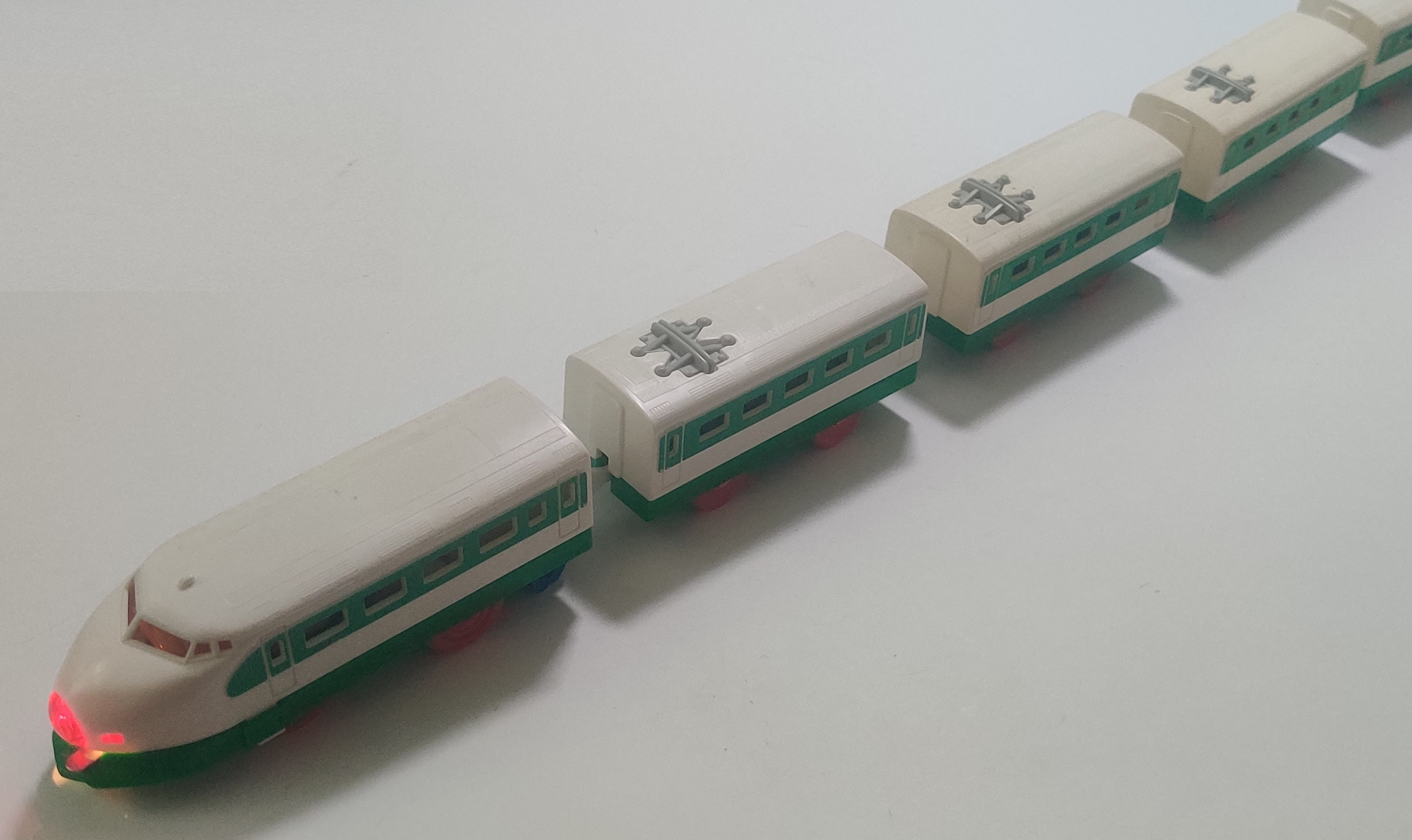
The new power versions of many of the older Plarail trains work very well without compromising the design of the original tooling, and the 200 series is one of them. Although I love the rim drive eras engines and the Tohoku Joetsu Shinkansen Deluxe Set that my first rim-drive 200 series came from, new power gearboxes just run better and more reliably overall. I like pretty much every old Plarail with a light feature and the 200 series is possibly my favorite.
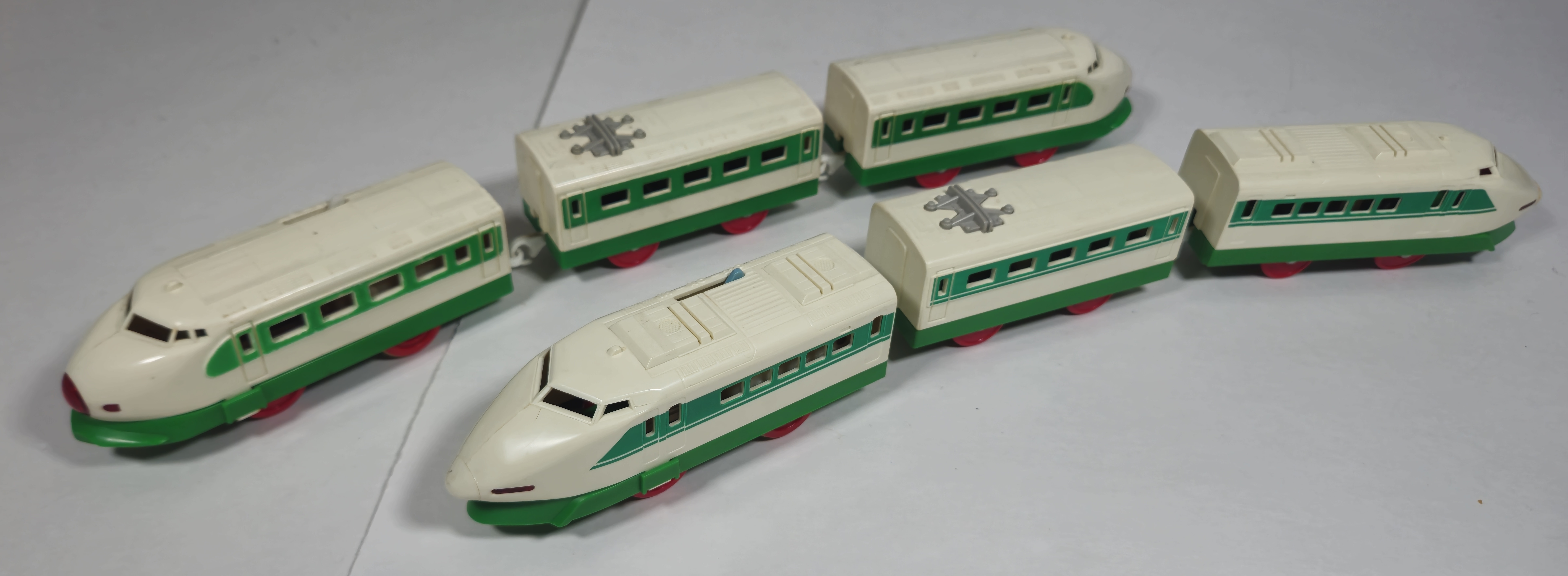
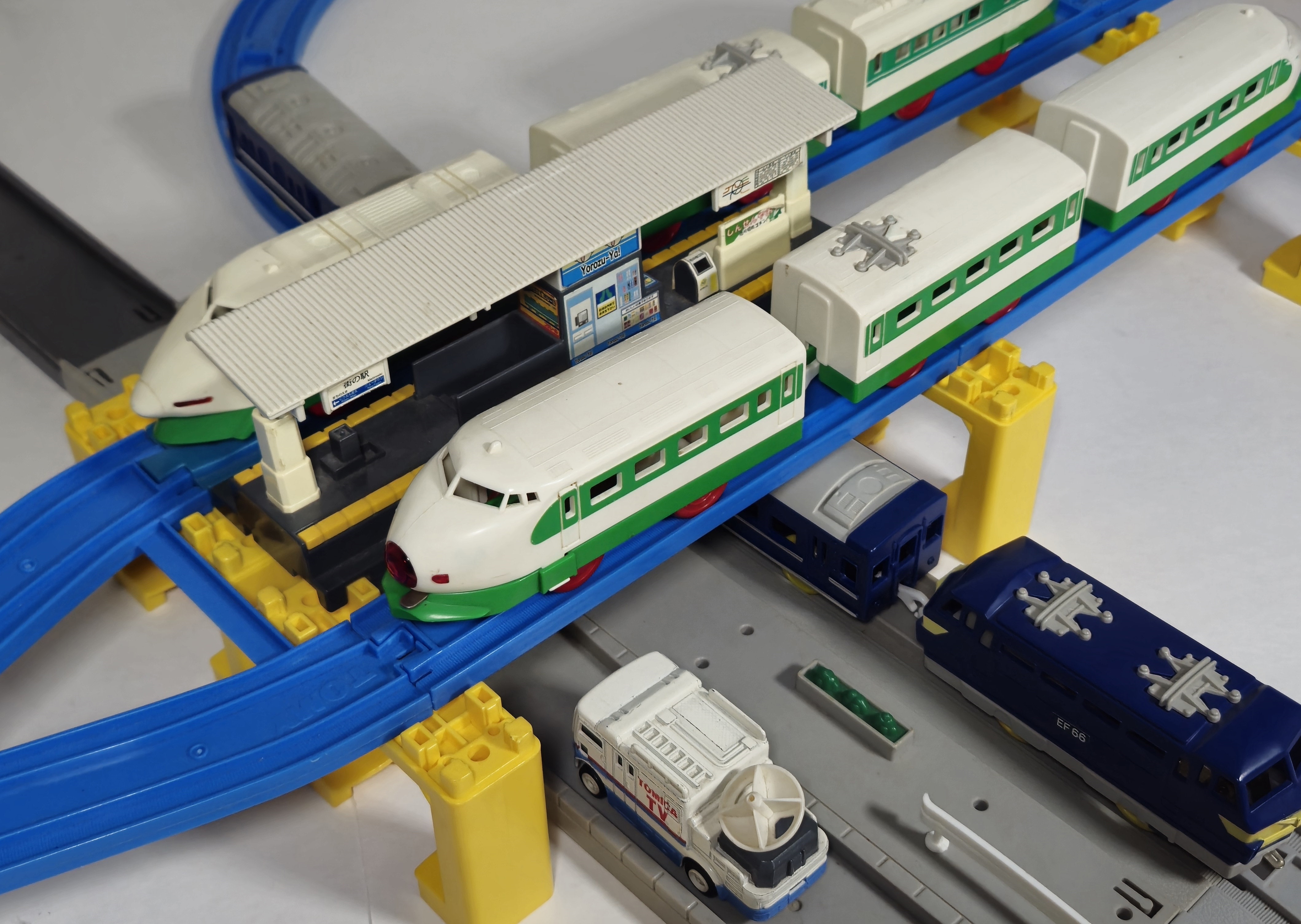
In 1990 Tomy began selling the two-speed Tohoku Joetsu Shinkansen based on the styling of the 100 series as later 200 series trains were. This release did not have a light, although the older 100 series release before the 1987 introduction of the two-speed new power gearbox did have a light. The 0-series style Tohoku Joetsu went out of production around 1992.